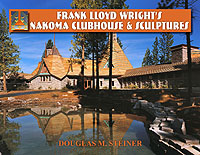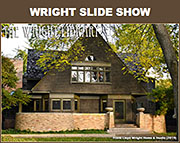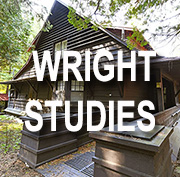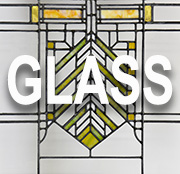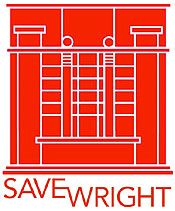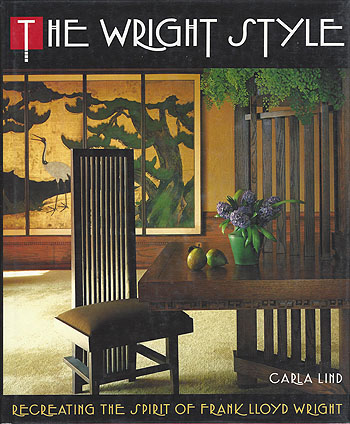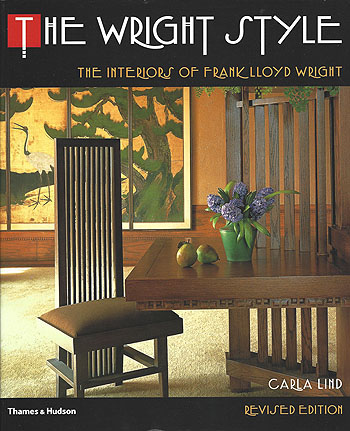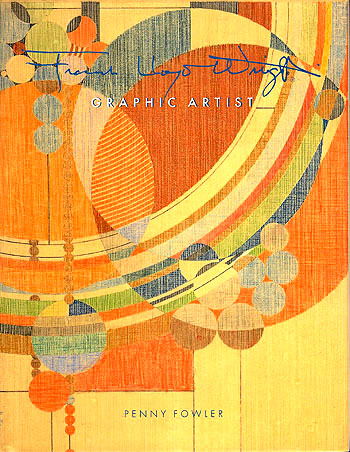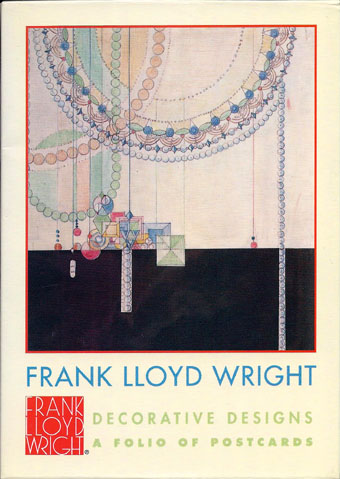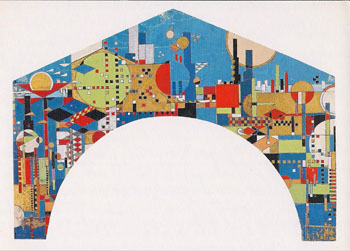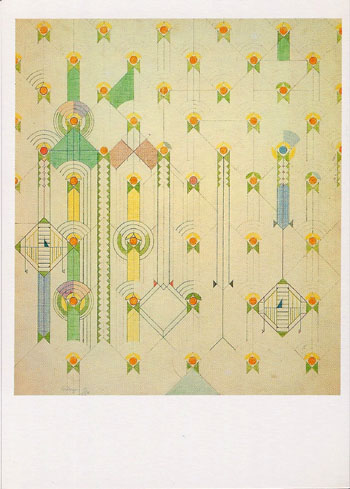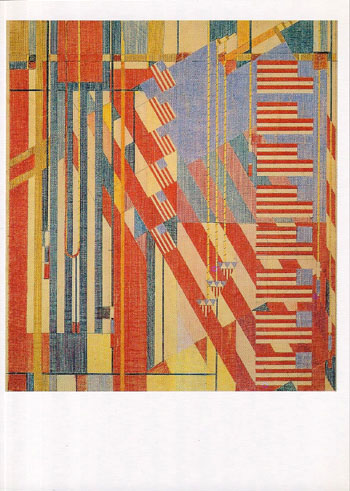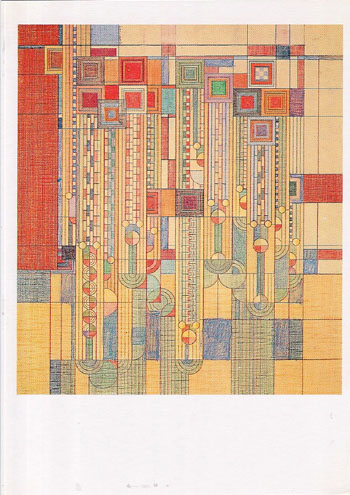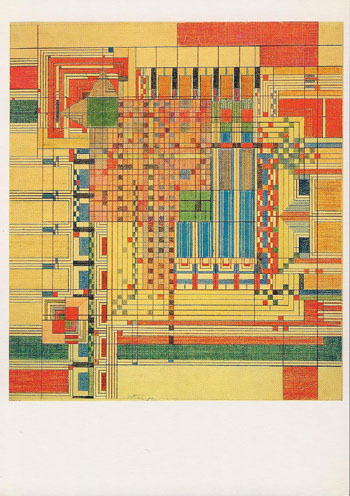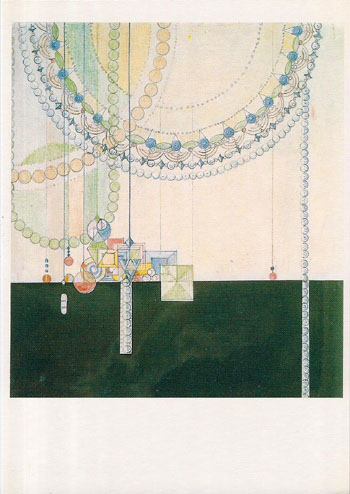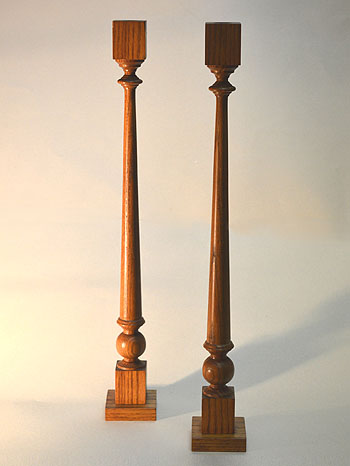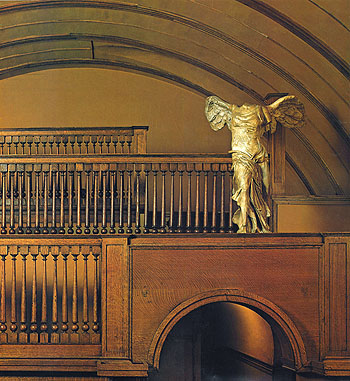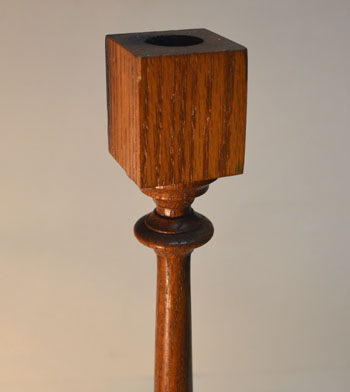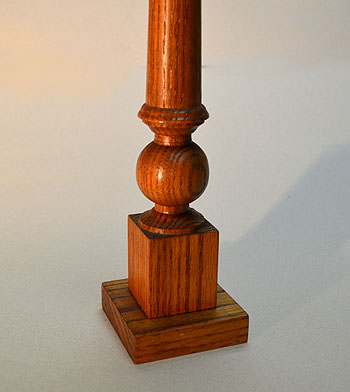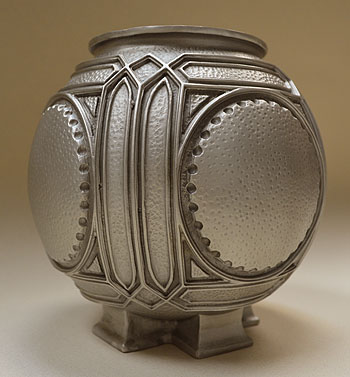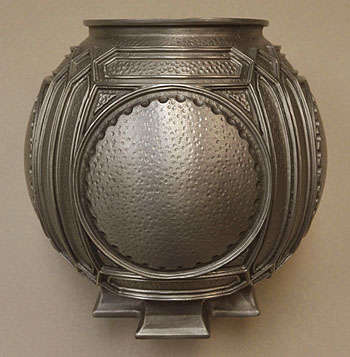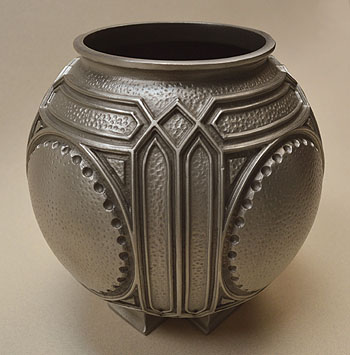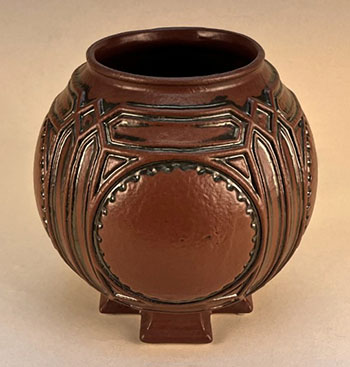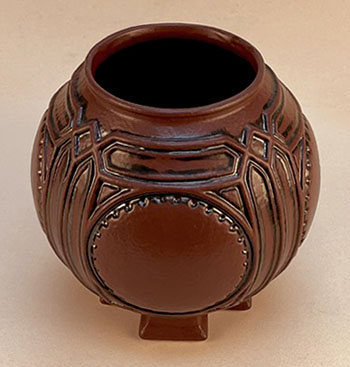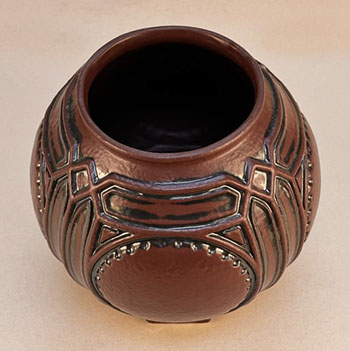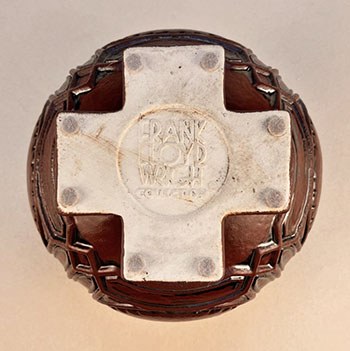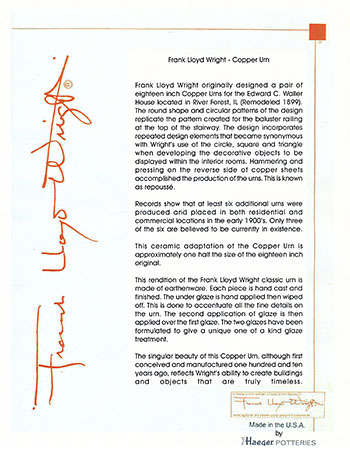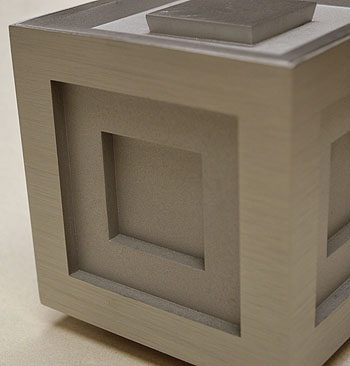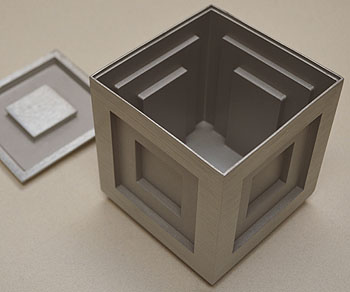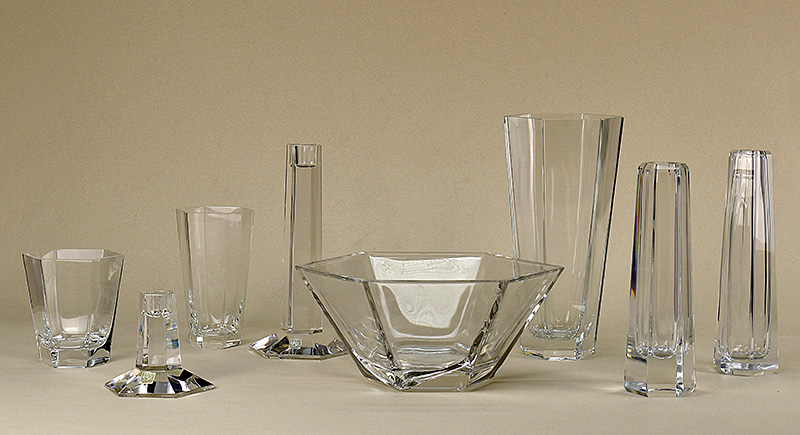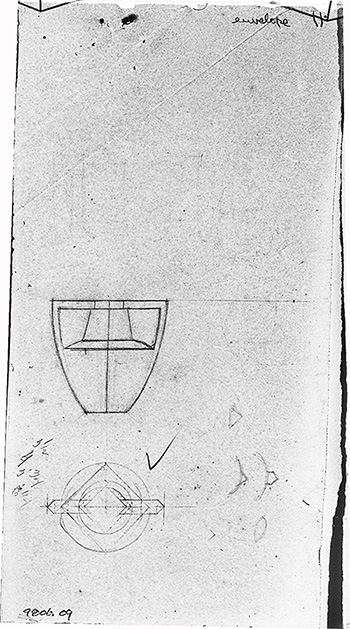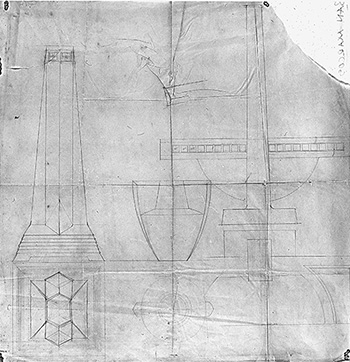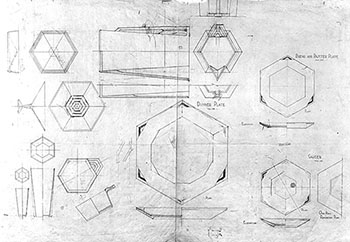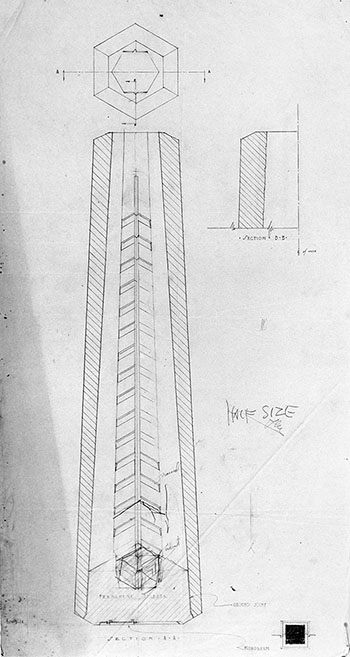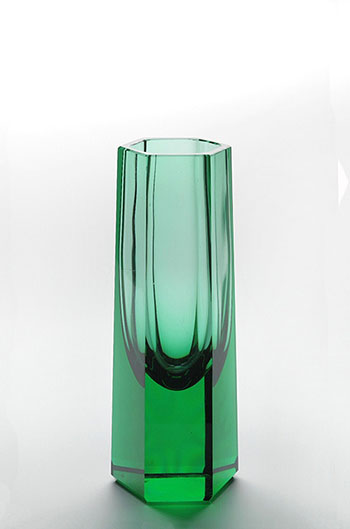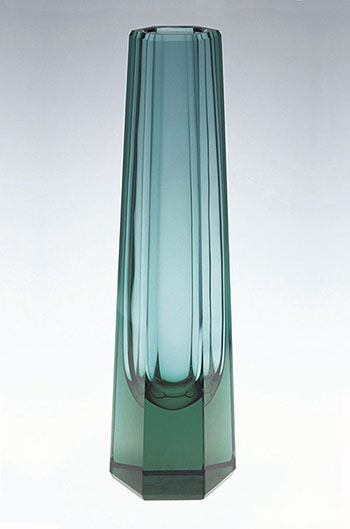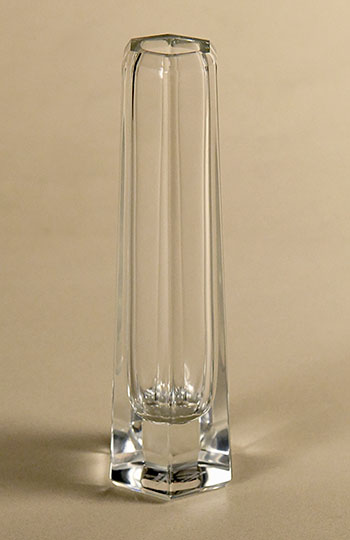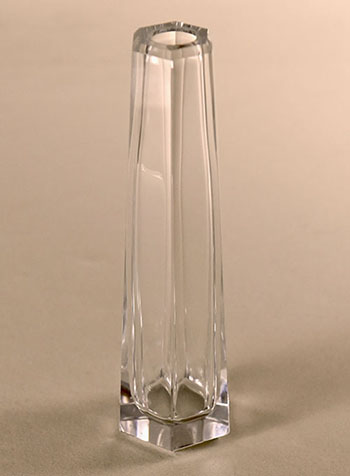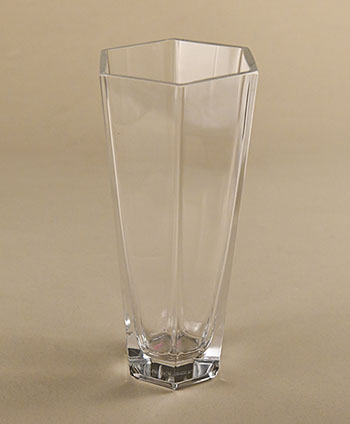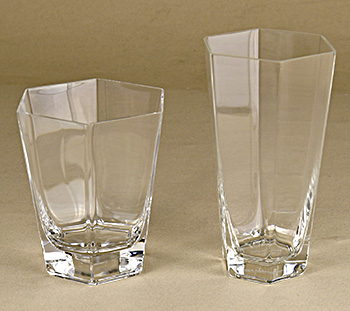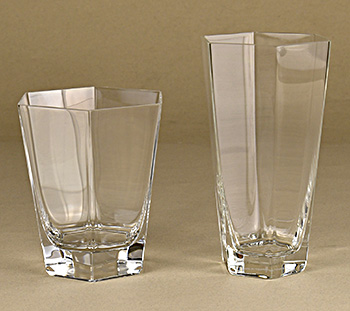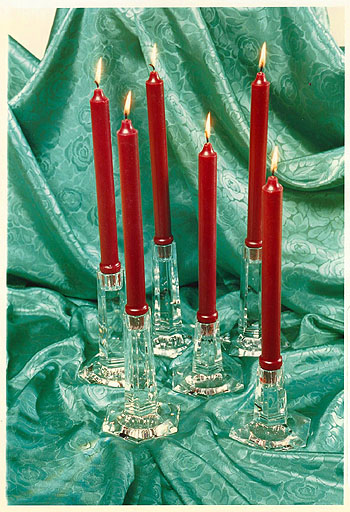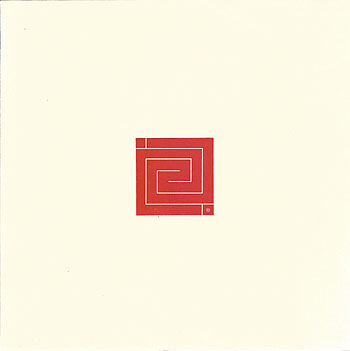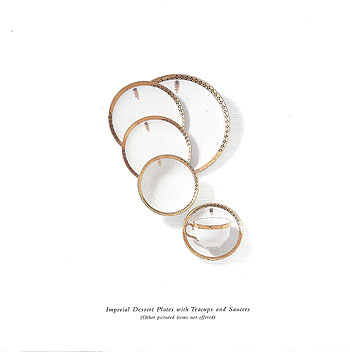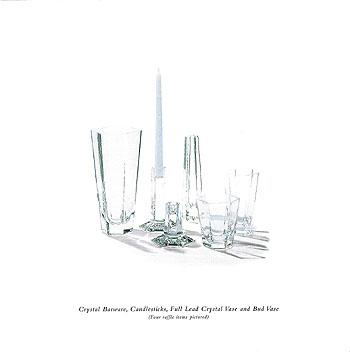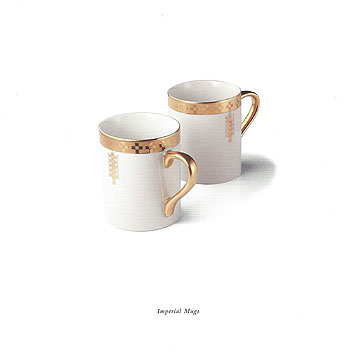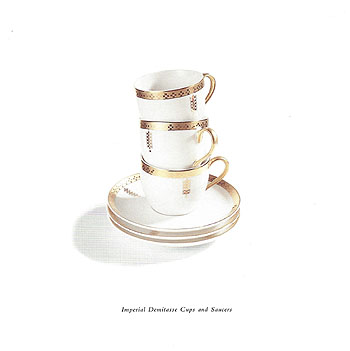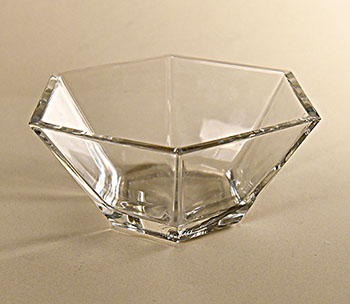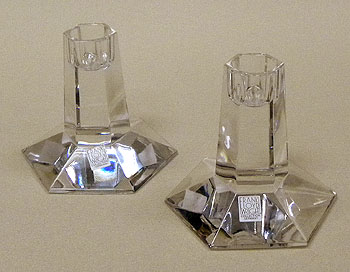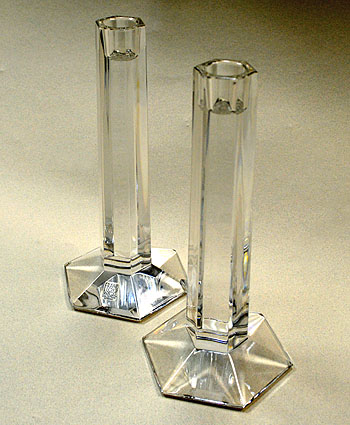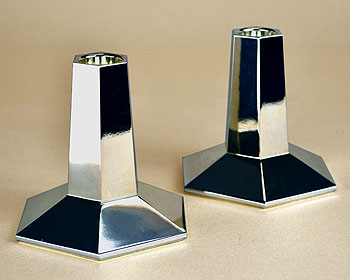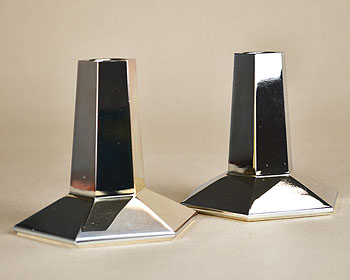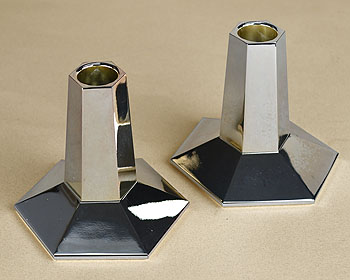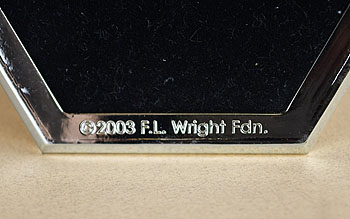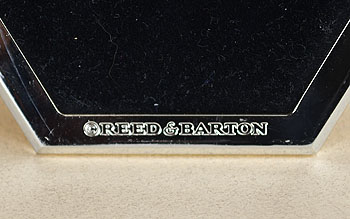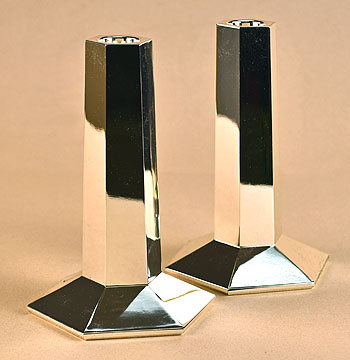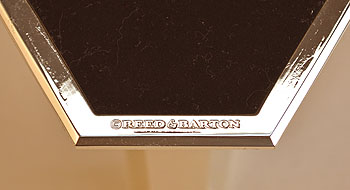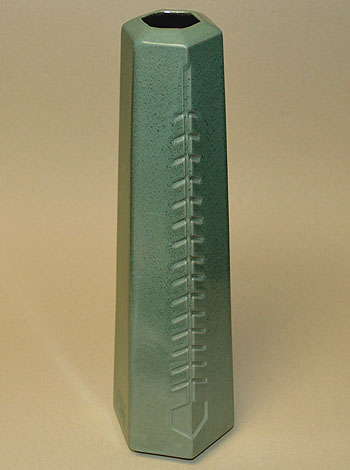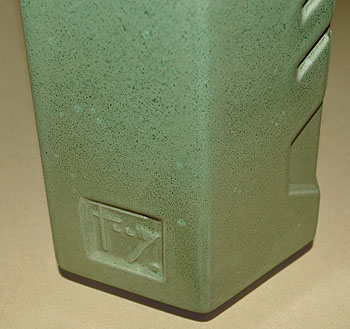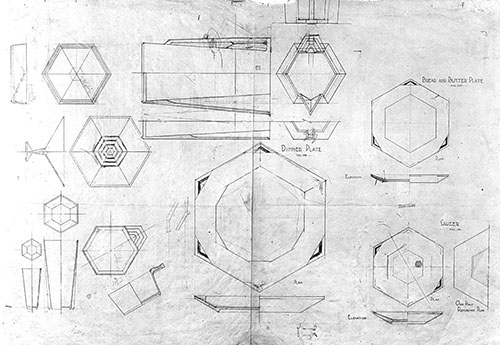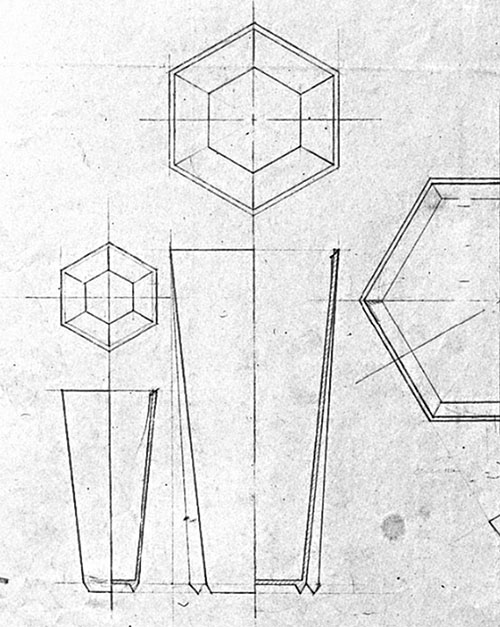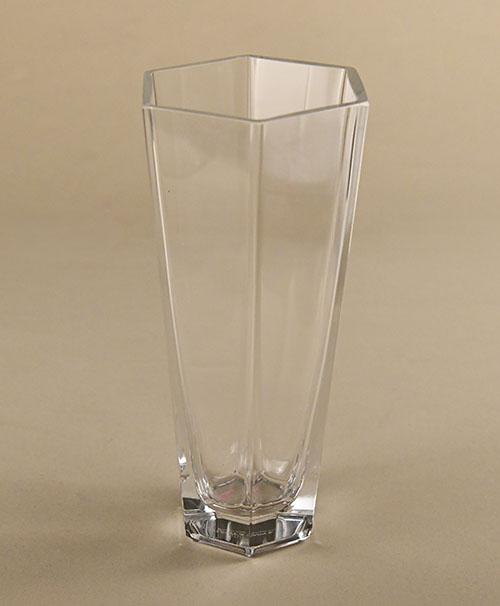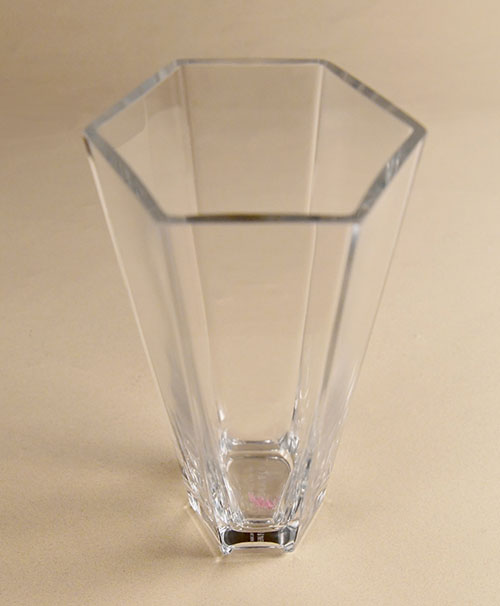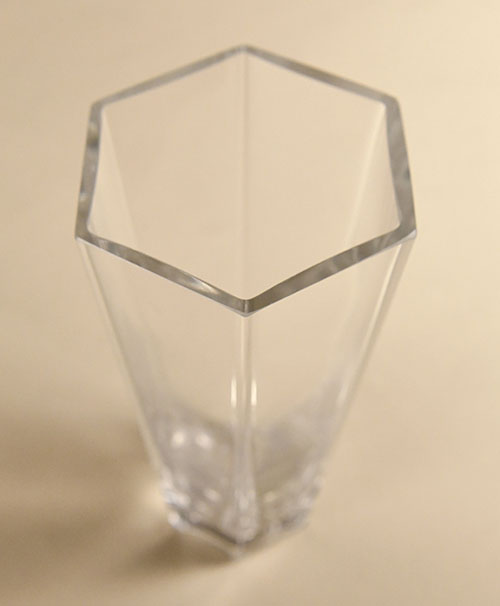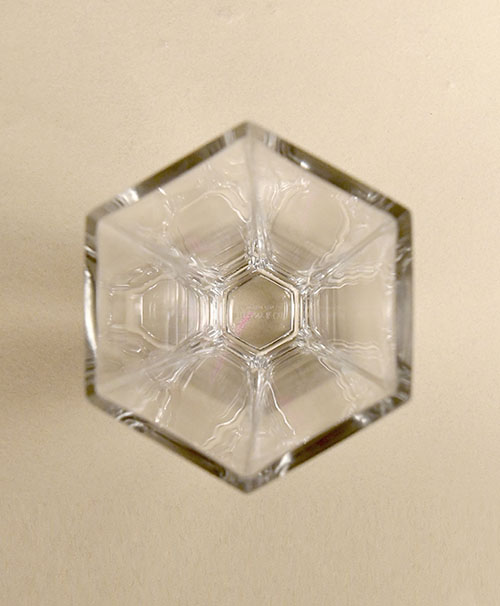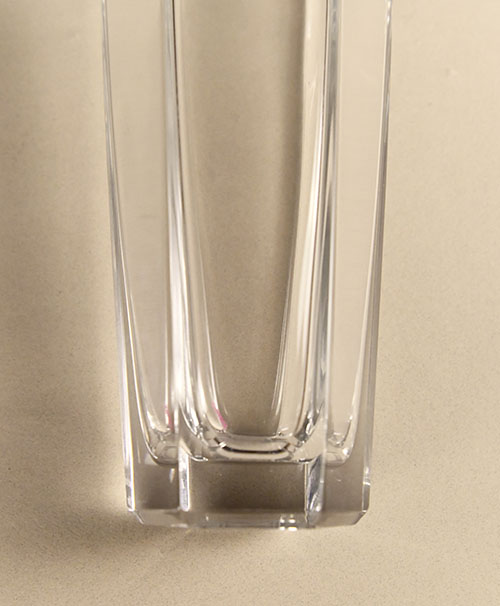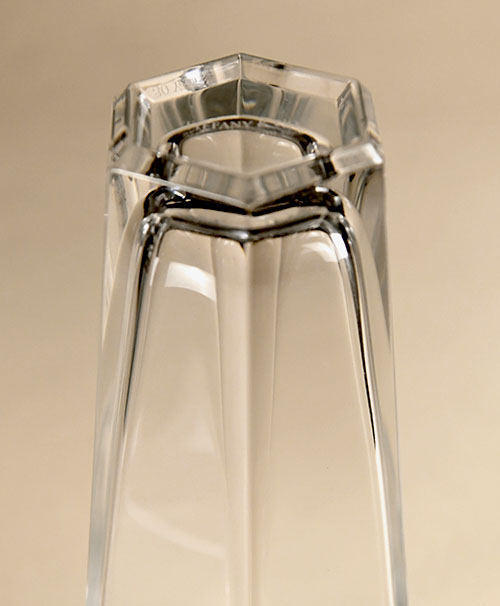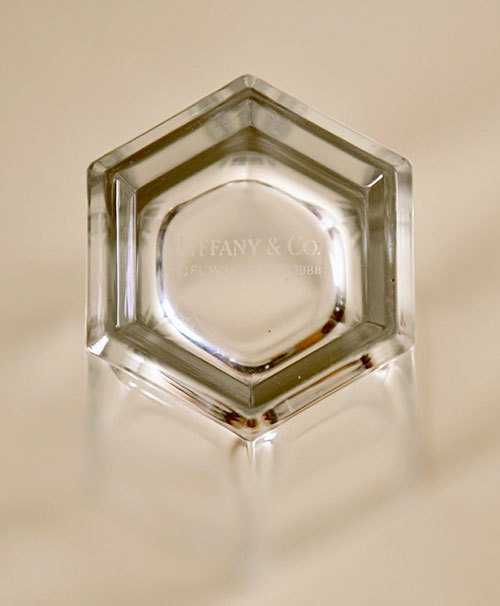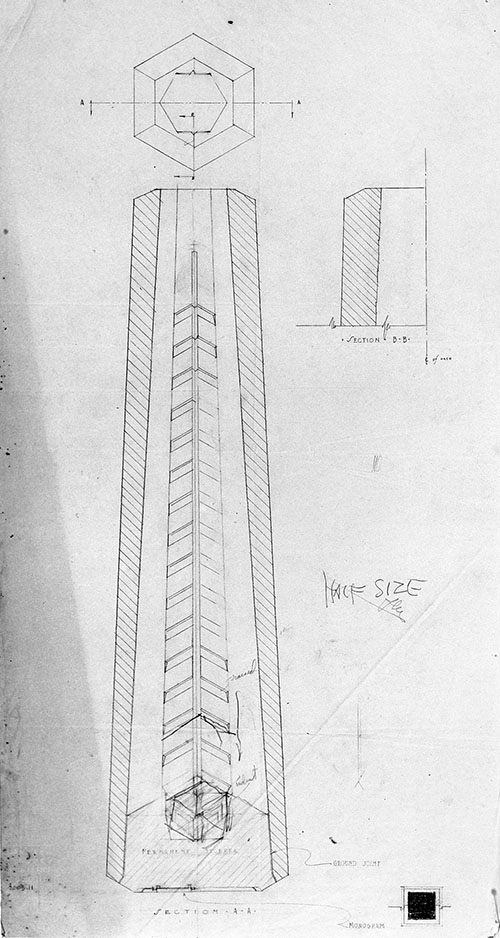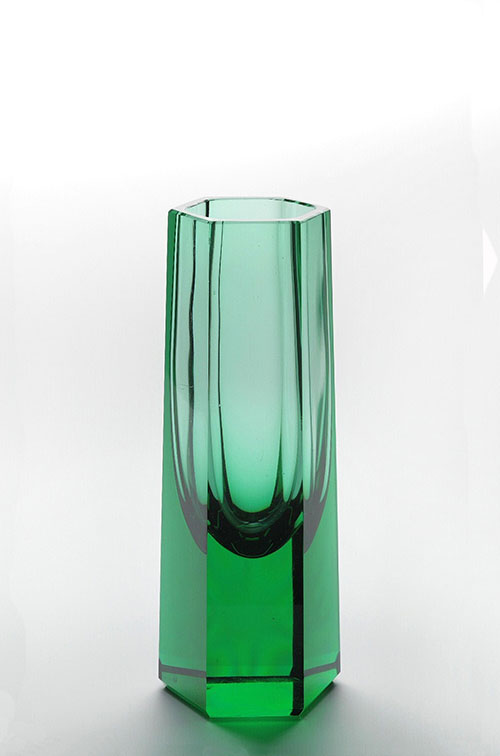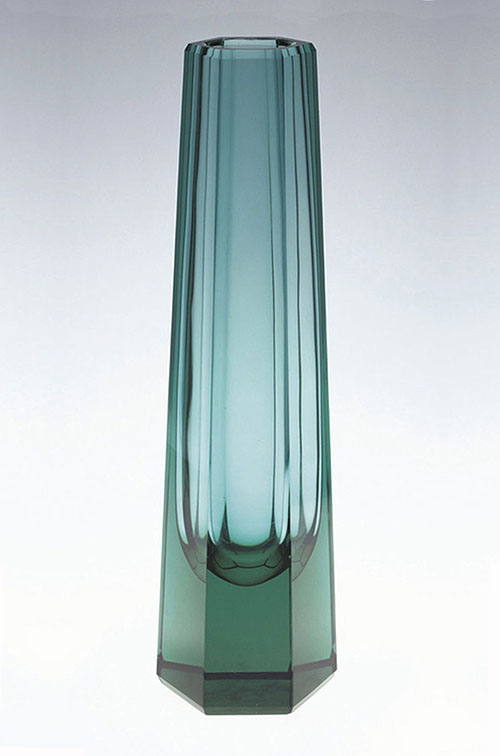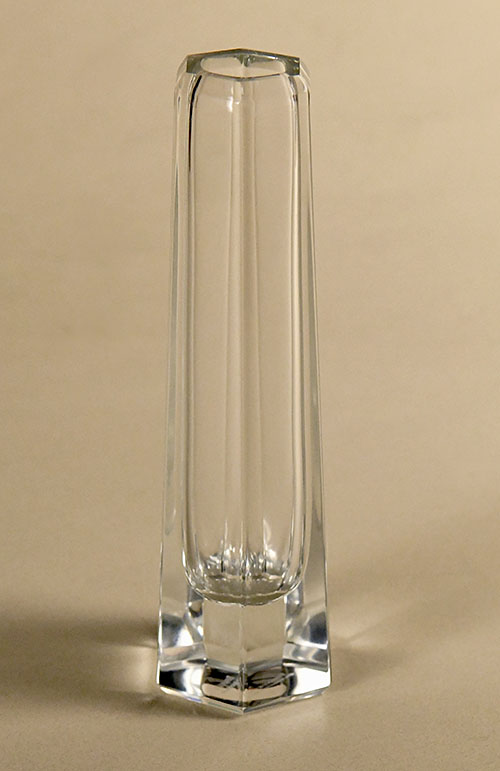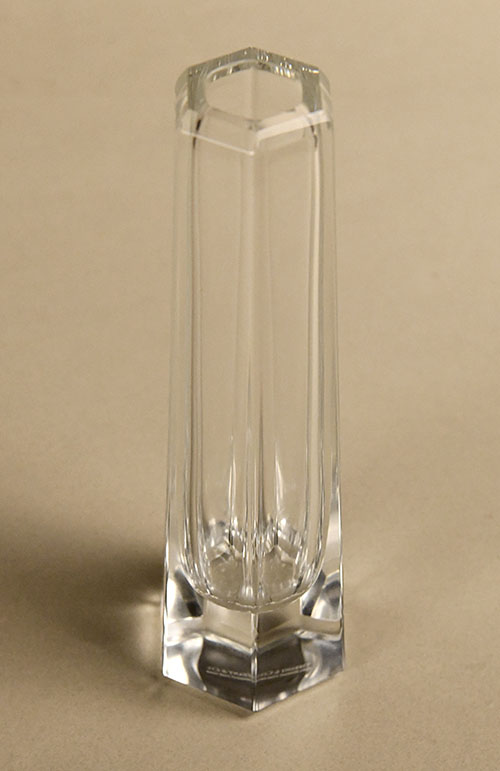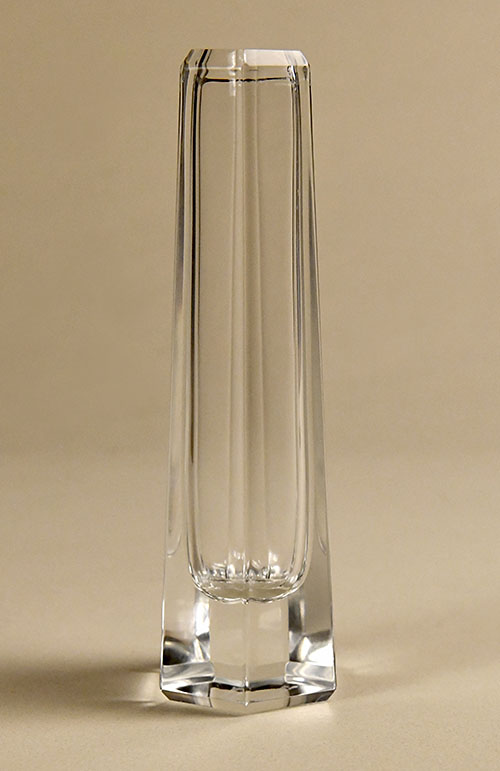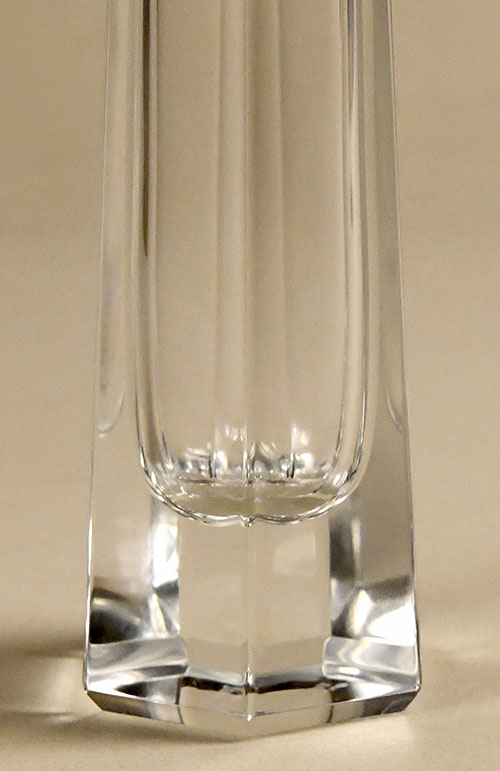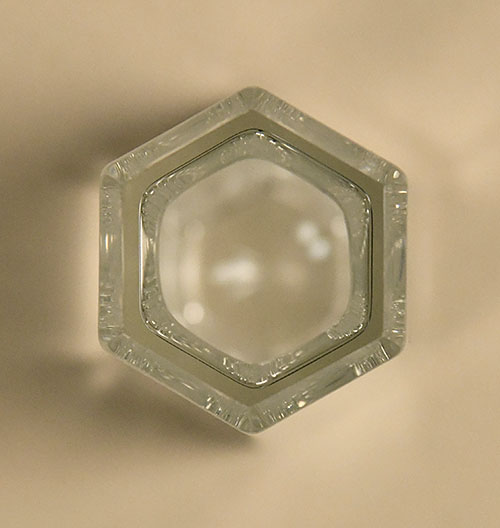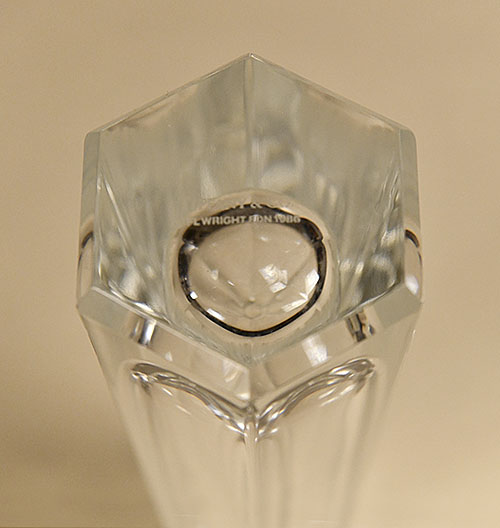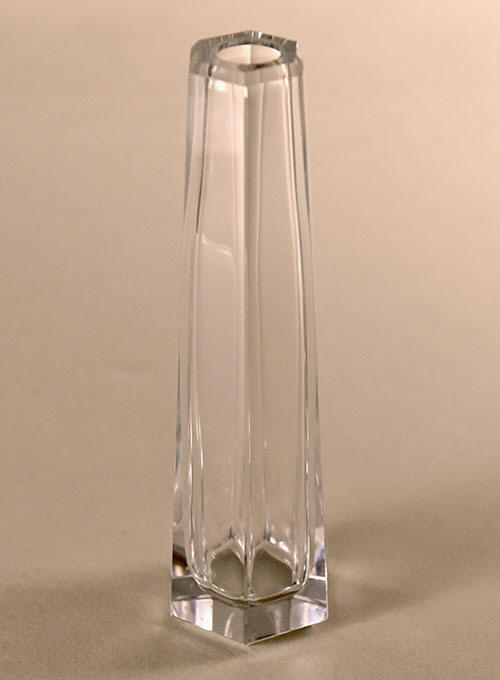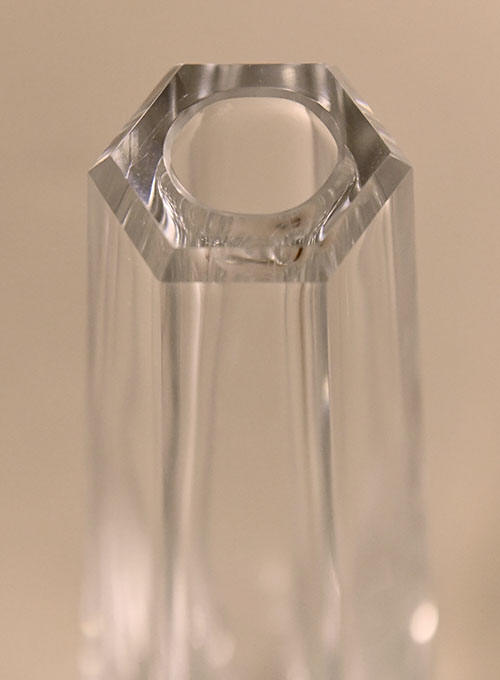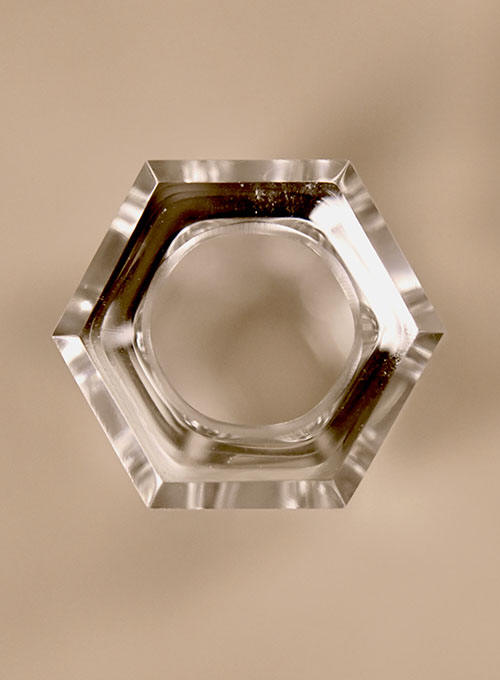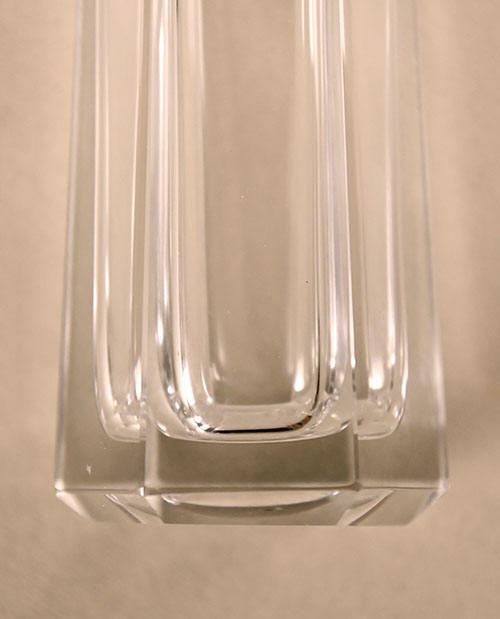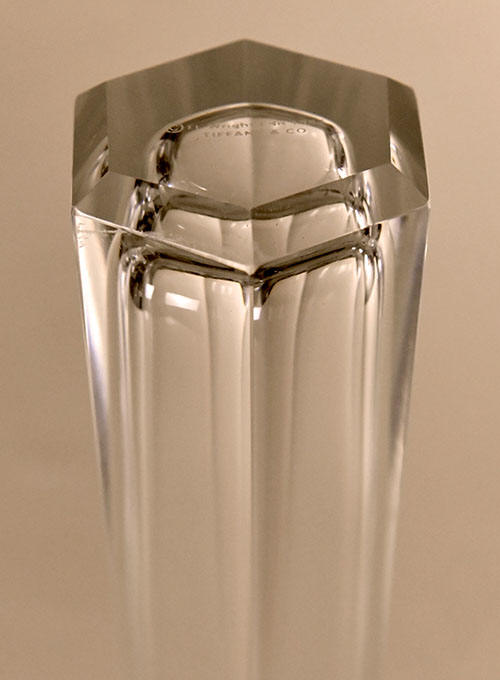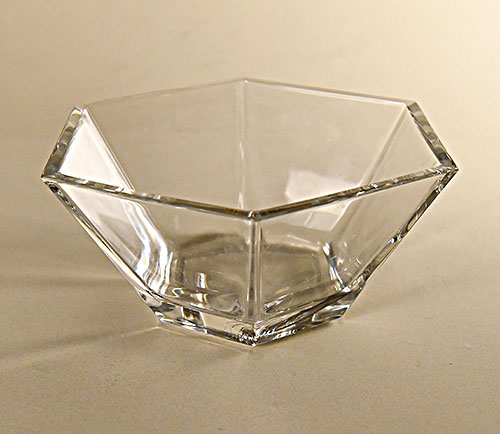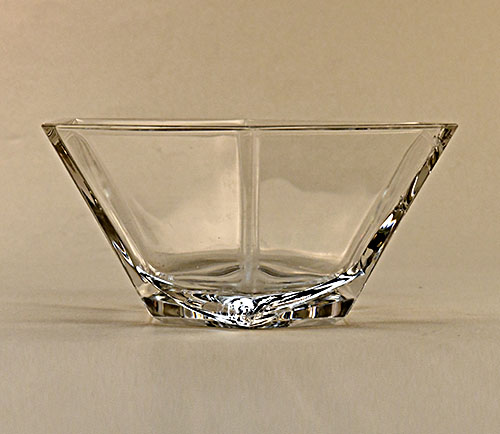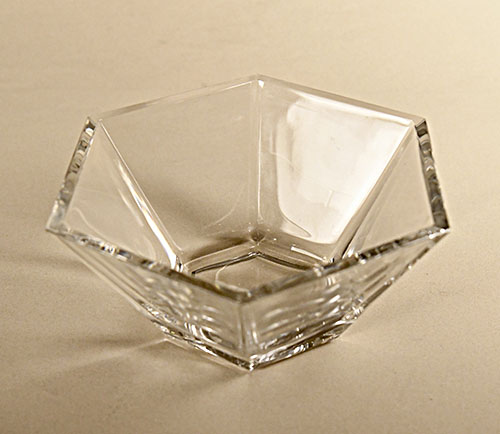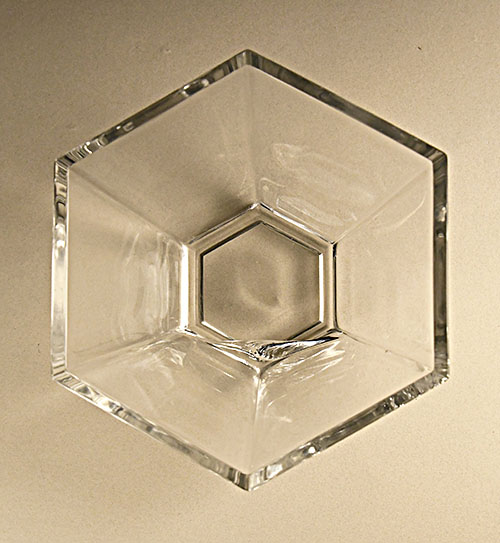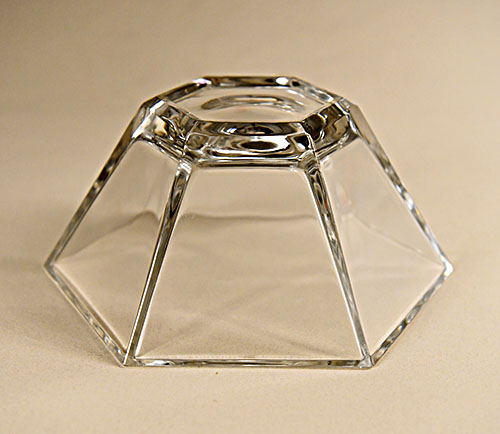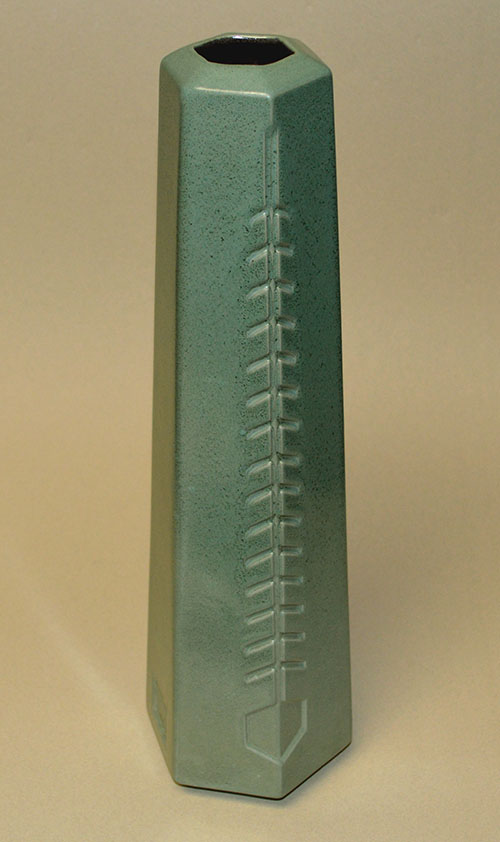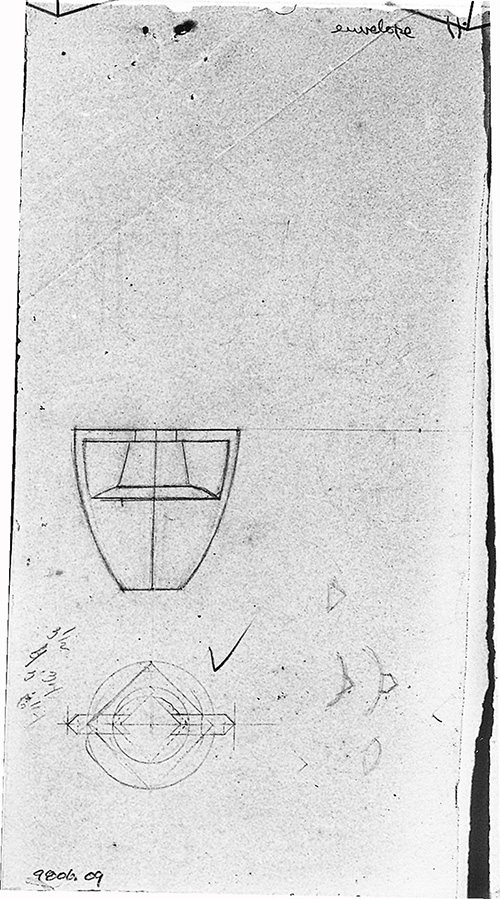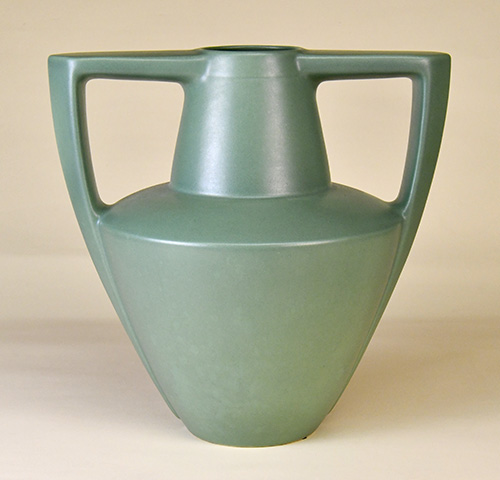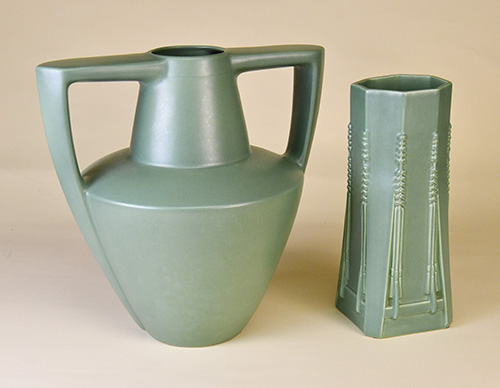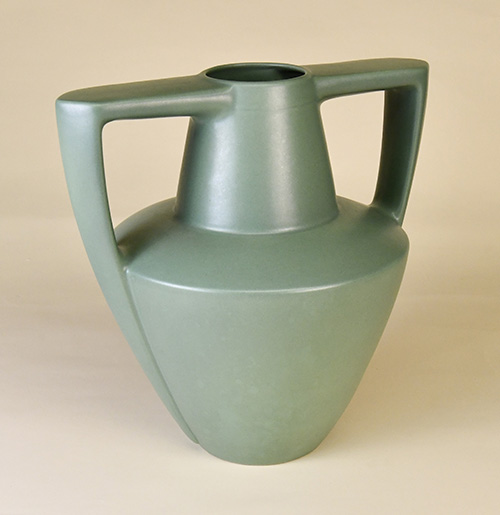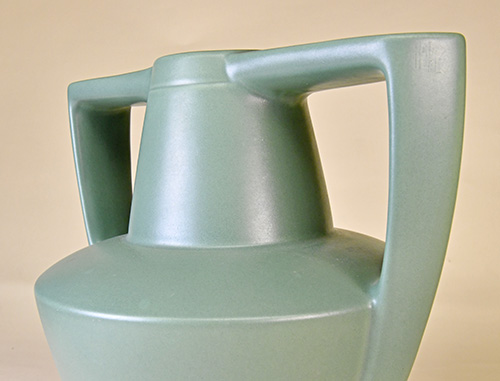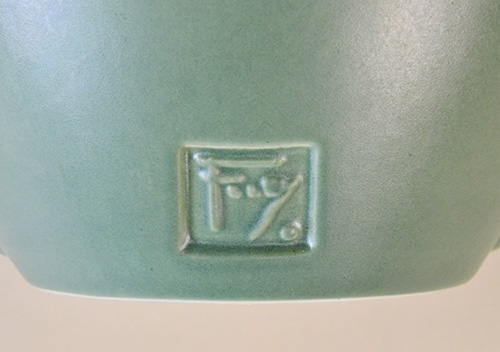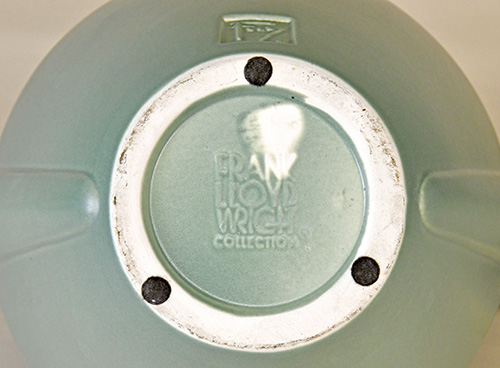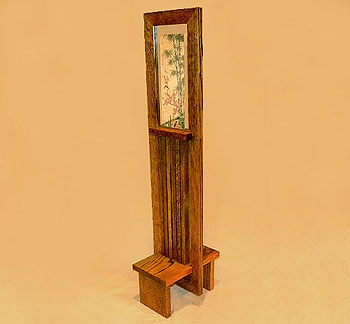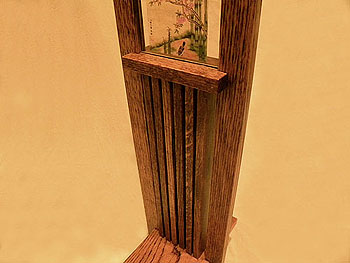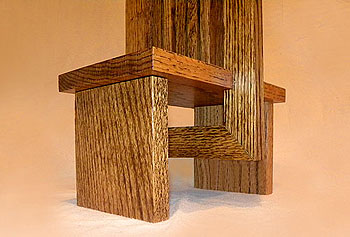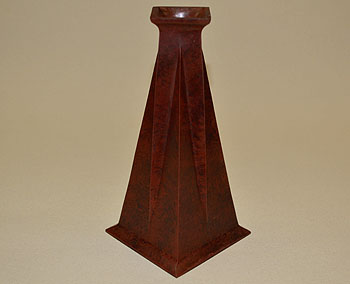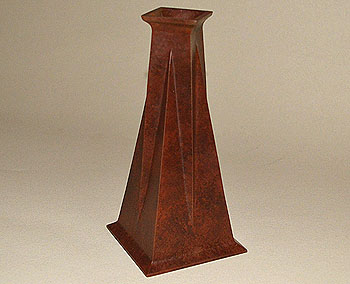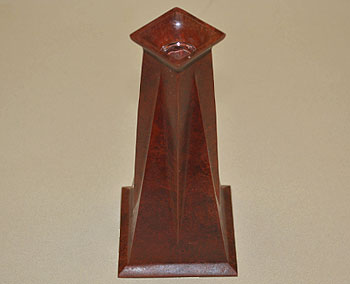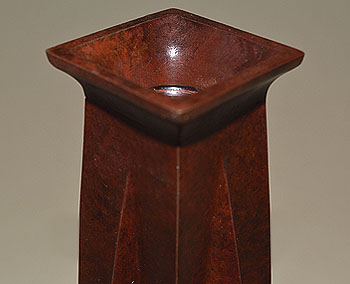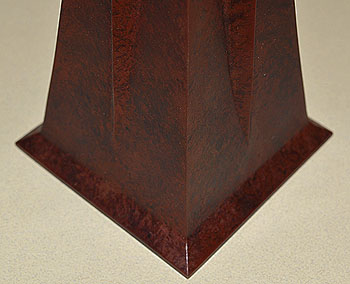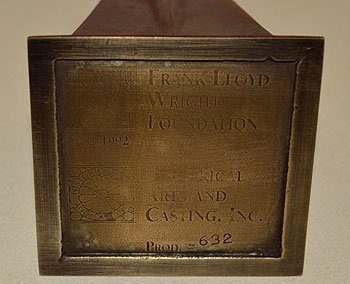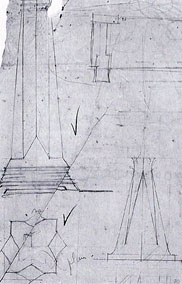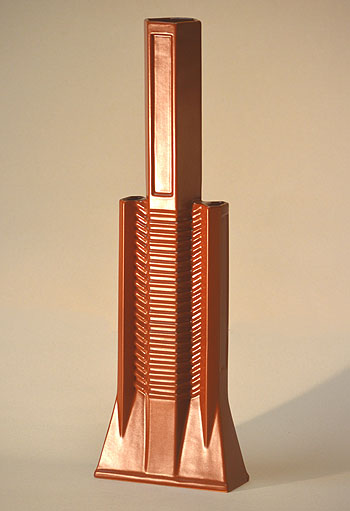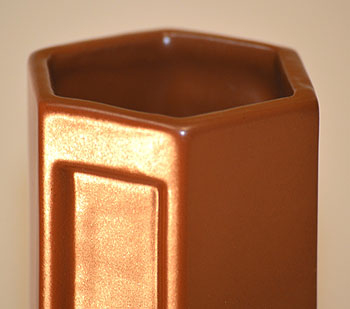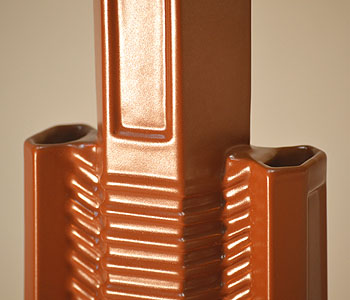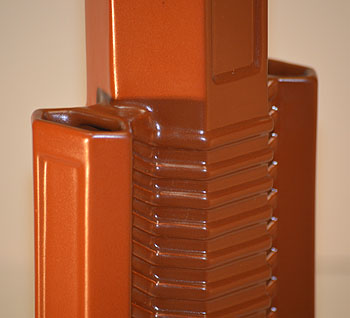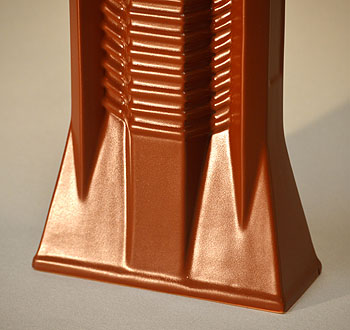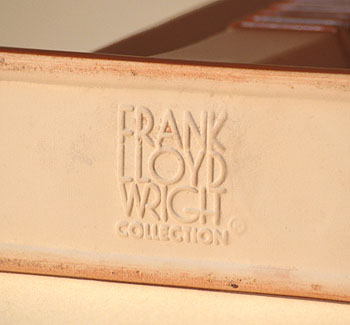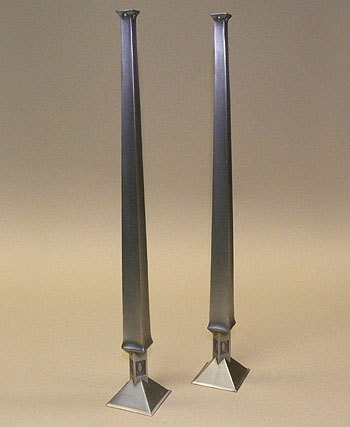
SUPPORT THE
WRIGHT LIBRARY
PROCEEDS FROM EVERY SALE GOES TO SUPPORT THE WRIGHT LIBRARY.
CLICK TO ORDER.
WE PROUDLY SUPPORT THE FRANK LLOYD WRIGHT FOUNDATION
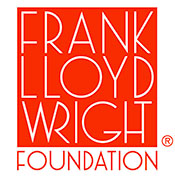
WE PROUDLY SUPPORT THE FRANK LLOYD WRIGHT BUILDING CONSERVANCY
WE PROUDLY SUPPORT FALLINGWATER
AND THE WESTERN PENNSYLVANIA CONSERVANCY

DECORATIVE & GRAPHIC DESIGNS BOOKS POSTCARDS CANDLESTICK COPPER URN HERITAGE HENREDON FOUR SQUARE LEERDAM GLASSFABRIK COMPANY
PRINT STAND VASE WEED HOLDER
BOOKS Date: 1992 Title: The Wright Style. Recreating The Spirit of Frank Lloyd Wright (Hard Cover DJ) (Published by Simon & Schuster, New York, London, Toronto, Sydney, Tokyo.)
Author: Lind, Carla
Description: "If you've ever wanted to step inside a house designed by frank Lloyd Wright or if you've ever dreamed of living in one The Wright Style offers the next best thing: an extraordinary look inside dozens of Wright's incomparable houses, all of them filled with countless inspiring ideas from America's favorite architect. From "pure" Wright houses to homes where his decorative magic has been mixed with related styles, the book captures the essence of the architect's timeless designs the spaces, the textures, the colors, the light, the furniture, the special features that all say Frank Lloyd Wright. As the magnificent houses here show, each of Wright's buildings was a complex composition of many interrelated elements; he regarded them as symphonies. Wright designed not just the shell, but everything inside as well: furniture, skylights, art glass windows, light fixtures, textiles, carpets, wall murals, decorative accessories, even the landscaping." (Dust Jacket) Original cover price $50.00. (Third Edition)
Size: 9.75 x 11.75
Pages: Pp 224
ST#: 1992.14.0499
Date: 2004
Title: The Wright Style. The Interiors of Frank Lloyd Wright, Revised Edition (Soft Cover) (Published by Thanes & Hudson Ltd., London)
Author: Lind, Carla
Description: "Here is a breathtaking look at the endlessly popular works of Frank Lloyd Wright. This great American architect regarded his houses as symphonies, each composed as a beautiful whole down to the smallest detail. He shaped not just the shell, but everything that went with it: furniture, skylights, art glass windows, light fixtures, textiles, carpets, murals, decorative accessories, even the surrounding landscape. The Wright Style offers an extraordinary guided tour of more than forty houses, from Frank Lloyd Wright's own homes in Oak Park, Illinois, and at the two Taliesins in Wisconsin and Arizona, via classic residences such as the Fallingwater, Wingspread and Hollyhock houses, to the creations of a dozen other architects - including Rudolf Schindler, John Lautner and Fay Jones - who have continued the tradition in startling new ways. All of Wright's periods are represented, and the many colour illustrations show how present-day occupants harmonize and live with their glorious dwellings. A full catalogue of products lists items available today, from sofas and tables to rugs and wallpapers, that will help re-create the unique Wright ambience..." (Inside Front Cover.) 9.5 x 11.5 (First Revised Edition)
Size:
Pages: Pp 224
ST#: 2004.76.0916Date: 2002 Title: Frank Lloyd Wright: Graphic Artist (Hard Cover - DJ)
Author: Fowler, Penny
Description: Original HC List Price $30.00. (First Edition) (See March Balloons)
Size: 8.25 x 10.75
Pages: Pp 133
ST#: 2002.43.0403
POSTCARDS Date: 1986 Title: Frank Lloyd Wright Decorative Designs, A Folio of Postcards (Published by Pomegranate Publications, Petaluma, CA)
Author: Pomegranate Publications
Description: A boxed portfolio of 12 postcards, two each of six designs. "Regarded by many as the ‘Father of American architects,’ Frank Lloyd Wright is not widely known as a graphic designer. This selection of twelve postcards (two each of six designs) presents some of his finest graphic decorative designs, five for Liberty magazine covers and one for a mural..." 1) "City by the Sea" Mural Design, 1956. (Copyright 1982.) 2) "Bird in the Cage," design for Liberty magazine cover, April 1927. (Copyright 1984.) 3) "July Fourth", design for Liberty magazine cover, 1927. (Copyright 1984.) 4) "Saguaro Forms", design for Liberty magazine cover, November 1927. (Copyright 1984.) 5) "Old Fashioned Window", design for Liberty magazine cover, 1927. (Copyright 1985.) 6) "Jewelry Shop Window", design for Liberty magazine cover, February 1927. (Copyright 1986.)
Size: Postcards 6 x 4.25. Box cover 4.4 x 6.1.
Pages: Pp 12
ST#: 1986.56.0514 (1-6)
1: (Left) "City by the Sea" Mural Design, 1956. (Copyright 1982.) 2: (Right) "Bird in the Cage," design for Liberty magazine cover, April 1927. (Copyright 1984.)
3: (Left) "July Fourth", design for Liberty magazine cover, 1927. (Copyright 1984.) 4: (Right) "Saguaro Forms", design for Liberty magazine cover, November 1927. (Copyright 1984.)
5: (Left) "Old Fashioned Window", design for Liberty magazine cover, 1927. (Copyright 1985.) 6: (Right) "Jewelry Shop Window", design for Liberty magazine cover, February 1927.
Date: 2008
Title: Decorative Designs: A Book of Postcards (Published by Pomegranate Communications, Inc., Petaluma, CA)
Author: Pomegranate Communications
Description: First published in 2000. "Seeking perfection in every ornament, Frank Lloyd Wright designed exquisite patterns for the rugs, carpets, murals, and mosaics that adorned his architectural masterpieces. These dazzling, highly abstract works of graphic art reflect Wright’s long time fascination with geometric motives, which he believed represented specific principles... This postcard book features 30 of Wright’s most imaginative textiles, window, and mural designs; it also includes several patterns created for the cover of liberty magazine." (Back cover) Original list price $9.95. (Third Edition)
Size: 7 x 4.75
Pages: Pp 62
ST#: 2008.35.0517CANDLESTICKS
Date: 1986
Title: Candlesticks.
Description: Oak candlesticks adapted from Frank Lloyd Wright Home and Studio playroom balusters, 1986 (1895 - S.003). There is no evidence that Frank Lloyd Wright designed this baluster as a candlestick, it is merely an adaptation of the Home and Studio playroom baluster. Caption from the 1992/1993 Gift Catalog: "Oak Candlesticks. Wright used the cube, cone and sphere as motifs for his decorative designs. Our solid oak candlesticks are full-scale reproductions of the balusters in the 1895 playroom balcony of his Oak Park home. Original list price $65 a pair.
Size: 22.25" high.
ST#: 1990.143.0718
COPPER URN Date: 2003 Title: Frank Lloyd Wright Designed Reproduction Pewter Urn, 2003.
Description: (Produced by Historical Arts & Casting Inc. West Jordan, UT). Wright began experimenting with variations of the design for the Urn as early as 1894, and the design of the first designed this copper urn in the late 1890's, "Monograph 1887-1901" Pfeiffer, 1991, pages 60-61. It was one of Wright's favorite objects. He included it in a number of drawings and projects he worked on, including those for the Husser house, Edward C. Waller house, Wright's own Home and Studio, the Dana house, the Coonley house, Browne's Bookstore and appeared in an early image of Unity Temple. The original was eighteen inches tall. This is a one-third scale version of the original copper urn. Stamped in base, Historical Arts logo and Frank Lloyd Wright Collections logo. "Historical Arts & Casting Inc. 5580 West Bagley Park Road, West Jordan, UT 84088." Engraved in base, number "00740". Original price $156 each. Wright Study on Copper Urn
Size: 5.5 inches tall, 6 inches in diameter.
ST#: 2003.47.0514
Date: 2010
Title: Frank Lloyd Wright Designed Reproduction Ceramic Urn, Circa 2010 (Not dated).
Description: Ceramic reproduction of Frank Lloyd Wright’s design of a copper urn manufactured by Haeger Potteries. Wright began experimenting with variations of the design for the Urn as early as 1894, and the design of the first designed this copper urn in the late 1890's, "Monograph 1887-1901" Pfeiffer, 1991, pages 60-61. Manufacturer’s description: “Frank Lloyd Wright originally designed a pair of eighteen inch Copper Urns for the Edward C. Waller House located in River Forest, IL (Remodeled 1899). The round shape and circular patterns of the design replicate the pattern created for the baluster railing at the top of the stairway. The design incorporates repeated design elements that became synonymous with Wright's use of the circle, square and triangle when developing the decorative objects to be displayed within the interior rooms. Hammering and pressing on the reverse side of copper sheets accomplished the production of the urns. This is known as repoussé. Records show that at least six additional urns were produced and placed in both residential and commercial locations in the early 1900's. Only three of the six are believed to be currently in existence.
This ceramic adaptation of the Copper Urn is approximately one half the size of the eighteen inch original.
This rendition of the Frank Lloyd Wright classic urn is made of earthenware. Each piece is hand cast and finished. The under glaze is hand applied then wiped off. This is done to accentuate all the fine details on the urn. The second application of glaze is then applied over the first glaze. The two glazes have been formulated to give a unique one of a kind glaze treatment.
The singular beauty of this Copper Urn, although first conceived and manufactured one hundred and ten years ago, reflects Wright's ability to create buildings and objects that are truly timeless.”
After being in business for over 145 years, Haeger Potteries ceased operations in 2016. Text on base of urn: “Frank Lloyd Wright Collection.”
Size: The original size of Wright’s 1890's Urn was 18.” This urn: 8." Sheet: 8.5 x 11.
ST#: 2010.50.1022
HERITAGE HENREDON FOUR SQUARE VASE
Date: 2003
Title: Four Square Ornamental Cube Vase, 2003.
Description: In 1955 Frank Lloyd Wright designed three lines of furniture for production by Heritage Henredon. The Burberry, The Honeycomb and The Four Square. Only the Four Square line was produced and was presented in the November 1955 issue of House Beautiful. Wright also designed accessories, but only prototypes were produced, two of which were published in the November 1955 House Beautiful, a tall vase and an 8" x 8" square vase, p.290. The four square design was woven into the furniture as well as fabric. In 1973, the Yellowstone Art Center, Billings, Montana exhibited never produced "Four Square" furniture including a high back chair, low back chair with and without arm, three different hassocks, and a footstool built specifically for the exhibition. Also on display were large "Four Square" boxes, used as display pedestals, but almost appear as end tables. The high back chair, low back chair with arms and one of the hassocks were later published in "The Prairie School Tradition," 1979/1985, p.112-113. In 1996, Historical Arts and Casting produced a line Frank Lloyd Wright decorative designs, which included a few of the Heritage-Henredon designed accessories, one of which was the Four Square Ornamental Cube Vase. A larger 8" square, produced to give the appearance it was manufactured in copper, and finished with a natural patina finish, and a smaller 4" square cube produced in pewter. Engraved in base: Historical Arts logo, "Historical Arts & Casting" and the Frank Lloyd Wright logo, "Frank Lloyd Wright Collection. Stamped (number): "01574." Second copy stamped (number): "02079." Historical Arts & Casting Inc. 5580 West Bagley Park Road, West Jordon, UT 84088. Original retail cost $96.00. Box only (minus lid) for sale $69.00 plus shipping. E-mail us for more information: steinerag@msn.com.
Size: 4" square cube
ST#: 2003.55.1116, 2003.69.0122
LEERDAM GLASSFABRIK COMPANY CRYSTAL VASE BUD VASE (1) 1986 BUD VASE (2) 1987 CRYSTAL BOWL 2000 PINNACLE VASE 2006 LARGE LEERDAM VASE 2007 Date: 1898
Title: Frank Lloyd Wright Designed Square Holder, Vase 2, Vases and Flowerholders, 1898, FLLW#9806.09.
Description: Side and top view of a vase combining square and circular elements. Designed by Frank Lloyd Wright in 1898. Wright's design interests extended well beyond architecture, encompassing vases and flower holders. In 1898, he created numerous designs, 13 of which are preserved in the Frank Lloyd Wright Archives. Among these, two notable designs were executed in copper: the renowned circular copper urn and the copper weed holder. In 1992, Historic Arts & Crafting executed two unrealized flower holders in bronze, based on Wright's designs. A fifth vase design, FLLW#9806.09, remained dormant for 32 years. This particular design uniquely combined square and circular elements and was titled "Vases and Flowerholders: Square Holder, 2."
Frank Lloyd Wright revived this fifth design in 1929 for the N.V. Glassfabrik Leerdam in Holland, FLLW#3003.33. The term "Glassfabrik" translates to "Glass Factory" in English. This Dutch glass manufacturing company was established in 1878 and became known as the NV Glasfabriek Leerdam in 1891. According to Bruce Brooks Pfeiffer, “In 1928 Wright began a correspondence with P. M. Cochius, director of the N. V. Glasfabriek "Leerdam" that produced fine designer glassware. Wright was hoping to have glass blocks made for the lighting in the living room of San Marcos-in-the-Desert. He also wanted tabletop glass sculptures of the Nakoma and Nakomis figures. None of these were ever produced, but in 1929 he created a series of designs for tableware and flower holders. Records indicate that only an emerald green tall hexagonal flower vase was produced. The other designs proved too difficult to manufacture.” Frank Lloyd Wright, Complete Works 1917-1942, 2010, p.188.
After lying dormant for 78 years, 109 years since its original conception, this design was finally brought to life in 2007. Haeger Potteries, in collaboration with the Frank Lloyd Wright Foundation, adapted and produced this vase for the first time #2007.101. See Additional Details...
Size: 5.75 x 10 B&W photograph.
S#: 0032.26.1225Date: 1929
Title: Frank Lloyd Wright Vase Design for Leerdam Glassfabrik, 1929 (FLLW#3003.33).
Description: Flower Holders designed by Frank Lloyd Wright in 1929 for Leerdam Glassfabrik. The center design was adapted from a design in 1898.
Wright's design interests extended well beyond architecture, encompassing vases and flower holders. In 1898, he created numerous designs, 13 of which are preserved in the Frank Lloyd Wright Archives. Among these, two notable designs were executed in copper: the renowned circular copper urn and the copper weed holder. In 1992, Historic Arts & Crafting executed two unrealized flower holders in bronze, based on Wright's designs. A fifth vase design, FLLW#9806.09, remained dormant for 32 years. This particular design uniquely combined square and circular elements and was titled "Vases and Flowerholders: Square Holder, 2."
Frank Lloyd Wright revived this fifth design in 1929 for the N.V. Glassfabrik Leerdam in Holland, FLLW#3003.33. The term "Glassfabrik" translates to "Glass Factory" in English. This Dutch glass manufacturing company was established in 1878 and became known as the NV Glasfabriek Leerdam in 1891. According to Bruce Brooks Pfeiffer, “In 1928 Wright began a correspondence with P. M. Cochius, director of the N. V. Glasfabriek "Leerdam" that produced fine designer glassware. Wright was hoping to have glass blocks made for the lighting in the living room of San Marcos-in-the-Desert. He also wanted tabletop glass sculptures of the Nakoma and Nakomis figures. None of these were ever produced, but in 1929 he created a series of designs for tableware and flower holders. Records indicate that only an emerald green tall hexagonal flower vase was produced. The other designs proved too difficult to manufacture.” Frank Lloyd Wright, Complete Works 1917-1942, 2010, p.188.
After lying dormant for 78 years, 109 years since its original conception, this design was finally brought to life in 2007. Haeger Potteries, in collaboration with the Frank Lloyd Wright Foundation, adapted and produced this vase for the first time #2007.101. Plans include side and top view of vase.
Size: 8 x 8.5 B&W photograph.
S#: 0228.42.1225Date: 1929
Title: Frank Lloyd Wright Designs for N. V. Glassfabrik Leerdam Glassware 1929 (Leerdam Glassfabrik), Leerdam, Holland. (Project, FLLW #3003.23)
Description: “Glassfabrik “ translates to “Glass Factory” in English. Designs include Dinner Plate, Bread and Butter Plate, Saucer, Coffee Pot, Dish, Glass, Vase. The Dutch glass manufacturing company was founded in 1878, and becoming the NV Glasfabriek Leerdam in 1891. According to Bruce Brooks Pfeiffer, “In 1928 Wright began a correspondence with P. M. Cochius, director of the N. V. Glasfabriek "Leerdam" that produced fine designer glassware. Wright was hoping to have glass blocks made for the lighting in the living room of San Marcos-in-the-Desert. He also wanted tabletop glass sculptures of the Nakoma and Nakomis figures. None of these were ever produced, but in 1929 he created a series of designs for tableware and flower holders. Records indicate that only an emerald green tall hexagonal flower vase was produced. The other designs proved too difficult to manufacture.” Frank Lloyd Wright, Complete Works 1917-1942, 2010, p.188. Courtesy of the Frank Lloyd Wright Archives, Avery Library, Columbia University. See Additional Photographs...
Size: 10.5 x 7.5 B&W photograph.
S#: 0228.37.0224Date: 1929
Title: Frank Lloyd Wright Designs for N. V. Glassfabrik Leerdam Tall Vase 1929 (Leerdam Glassfabrik), Leerdam, Holland. (Project, FLLW #3003.11)
Description: “Glassfabrik “ translates to “Glass Factory” in English. Designs include Dinner Plate, Bread and Butter Plate, Saucer, Coffee Pot, Dish, Glass, Vase. The Dutch glass manufacturing company was founded in 1878, and becoming the NV Glasfabriek Leerdam in 1891. According to Bruce Brooks Pfeiffer, “In 1928 Wright began a correspondence with P. M. Cochius, director of the N. V. Glasfabriek "Leerdam" that produced fine designer glassware. Wright was hoping to have glass blocks made for the lighting in the living room of San Marcos-in-the-Desert. He also wanted tabletop glass sculptures of the Nakoma and Nakomis figures. None of these were ever produced, but in 1929 he created a series of designs for tableware and flower holders. Records indicate that only an emerald green tall hexagonal flower vase was produced. The other designs proved too difficult to manufacture.” Frank Lloyd Wright, Complete Works 1917-1942, 2010, p.188. This was used in producing the tall ceramic Pinnacle Flower Vase 2006 (ST#2006.45), and the Crystal Bud Vase 1986 (ST#1986.149) and 1987 (ST#1987.142), minus the design on the bud base. Courtesy of the Frank Lloyd Wright Archives, Avery Library, Columbia University. See Additional Photographs: Bud Vase 1 (1986), Bud Vase 2 (1987), Pinnacle Vase (2006).
Size: 10 x 5.5 B&W photograph.
S#: 0228.38.0224Date: 1929/2001
Title: Frank Lloyd Wright Short Crystal Leerdam Bud Vase, Circa 2001/1929.
Description: Short Crystal Emerald Green Bud Vase, created in 1929, adapted from the design for the Leerdam Glassfabrik Company, Holland. In 1929, Wright designed tableware including china, stemware, serving pieces, candlesticks, and vases. According to Phieffer, “Frank Lloyd Wright Monograph” 1924-1936 Volume 5, 1990, page 74, a few designs were executed including a tall hexagonal flower vase in deep emerald green glass. This vase is in the collection at the Museum Boijmans, Van Beuningen, Rotterdam, Netherlands. Height: 30cm (11.8 “). Courtesy of the Museum Boijmans, Rotterdam. See Additional Photographs...
Size: 8 x 10 Color photograph.
ST#: 2001.91.0324Date: 1929/2001
Title: Frank Lloyd Wright Short Crystal Leerdam Bud Vase, Circa 2001/1929.
Description: Tall Crystal Emerald Green Bud Vase, created in 1929, adapted from the design for the Leerdam Glassfabrik Company, Holland. In 1929, Wright designed tableware including china, stemware, serving pieces, candlesticks, and vases. According to Phieffer, “Frank Lloyd Wright Monograph” 1924-1936 Volume 5, 1990, page 74, a few designs were executed including a tall hexagonal flower vase in deep emerald green glass. During our research, we located this photograph on the Bas Van Beek (Rotterdam) wedsite. Their caption reads: “In 1922 Royal Leerdam commissioned Frank Lloyd Wright to design a coffee service and vases for the American market. In 1929/29 only one vase was executed but was considered a failure by Mr. Wright because the interior of the vase didn’t line up with the exterior. Something that to this date is still impossible using the pressed glass technique.” Of note: Both the Museum Boijmans (ST#2001.91) and Bas Van Beek (ST#2001.92) indicate that only one vase was produced. This example appears to be much taller and closer to Wright’s original design (S#0228.38). Bas Van Beek does not indicate where this example is located. Courtesy of the Bas Van Beek, Rotterdam. See Additional Photographs...
Size: 8 x 10 Color photograph.
ST#: 2001.92.0324Date: 1986
Title: Frank Lloyd Wright Crystal Bud Vase, 1986.
Description: Adapted from the design for the N. V. Glassfabrik Leerdam (Leerdam Glassfabrik), Leerdam, Holland. "Glassfabrik “ translates to "Glass Factory” in English. The Dutch glass manufacturing company was founded in 1878, and becoming the NV Glasfabriek Leerdam in 1891. According to Bruce Brooks Pfeiffer, “In 1928 Wright began a correspondence with P. M. Cochius, director of the N. V. Glasfabriek "Leerdam" that produced fine designer glassware. Wright was hoping to have glass blocks made for the lighting in the living room of San Marcos-in-the-Desert. He also wanted tabletop glass sculptures of the Nakoma and Nakomis figures. None of these were ever produced, but in 1929 he created a series of designs for tableware and flower holders. Records indicate that only an emerald green tall hexagonal flower vase was produced. The other designs proved too difficult to manufacture.” Frank Lloyd Wright, Complete Works 1917-1942, 2010, p.188.
It is interesting to note that although Nakoma and Nakomis figures were not produced in glass, Charles L. Morgan produced table top glazed Terra Cotta Nakoma and Nakomis figures.
Note: This vase was produced again in 1987 by Tiffancy & Co. This base of this 1986 vase is deeper than the 1987 vase. The base of this 1986 vase is closer in size and shape to the two surviving samples from 1929. Etching on base: “Tiffany & Co. © FL Wright Fdn 1986.” See Additional Photographs...
Size: Top: 1.75 x 1.6. Circular opening: 1.0. Base: 2.5 x 2.25. Height: 8.25.
ST#: 1986.149.0224Date: 1987
Title: Frank Lloyd Wright Crystal Bud Vase, 1987.
Description: Adapted from the design for the N. V. Glassfabrik Leerdam (Leerdam Glassfabrik), Leerdam, Holland. “Glassfabrik “ translates to “Glass Factory” in English. The Dutch glass manufacturing company was founded in 1878, and becoming the NV Glasfabriek Leerdam in 1891. According to Bruce Brooks Pfeiffer, “In 1928 Wright began a correspondence with P. M. Cochius, director of the N. V. Glasfabriek "Leerdam" that produced fine designer glassware. Wright was hoping to have glass blocks made for the lighting in the living room of San Marcos-in-the-Desert. He also wanted tabletop glass sculptures of the Nakoma and Nakomis figures. None of these were ever produced, but in 1929 he created a series of designs for tableware and flower holders. Records indicate that only an emerald green tall hexagonal flower vase was produced. The other designs proved too difficult to manufacture.” Frank Lloyd Wright, Complete Works 1917-1942, 2010, p.188.
It is interesting to note that although Nakoma and Nakomis figures were not produced in glass, Charles L. Morgan produced table top glazed Terra Cotta Nakoma and Nakomis figures.
Note: This vase was first produced in 1986 by Tiffancy & Co. This base is not as deep as the 1986 vase. Etching on base: “© FL Wright Fdn 1987. Tiffany & Co.” See Additional Photographs...
Size: Top: 1.6 x 1.4. Base: 2.5 x 2.25. Height: 8.5
ST#: 1987.142.0224Date: 1988
Title: Frank Lloyd Wright Crystal Vase, 1988
Description: Adapted from the design for the N. V. Glassfabrik Leerdam (Leerdam Glassfabrik), Leerdam, Holland. “Glassfabrik “ translates to “Glass Factory” in English. The Dutch glass manufacturing company was founded in 1878, and becoming the NV Glasfabriek Leerdam in 1891. According to Bruce Brooks Pfeiffer, “In 1928 Wright began a correspondence with P. M. Cochius, director of the N. V. Glasfabriek "Leerdam" that produced fine designer glassware. Wright was hoping to have glass blocks made for the lighting in the living room of San Marcos-in-the-Desert. He also wanted tabletop glass sculptures of the Nakoma and Nakomis figures. None of these were ever produced, but in 1929 he created a series of designs for tableware and flower holders. Records indicate that only an emerald green tall hexagonal flower vase was produced. The other designs proved too difficult to manufacture.” Frank Lloyd Wright, Complete Works 1917-1942, 2010, p.188.
It is interesting to note that although Nakoma and Nakomis figures were not produced in glass, Charles L. Morgan produced table top glazed Terra Cotta Nakoma and Nakomis figures.
Note: We have seen this same vase produced by Tiffancy & Co. in 1986. Original price $165.00. See The Frank Lloyd Wright Home and Studio Museum Catalog, 1995/1996, p.13.
Etching on base: “Tiffany & Co., © FL Wright Fdn 1988.” See Additional Photographs...
Size: Top: 4.8 x 4.25. Base: 3 x 2.6. Height: 9.75
ST#: 1988.144.0224Date: 1988
Title: Frank Lloyd Wright Crystal Double Old-Fishioned Glass (Left), 1988.
Description: One crystal highball glass adapted from the design for the N. V. Glassfabrik Leerdam (Leerdam Glassfabrik), Leerdam, Holland. “Glassfabrik “ translates to “Glass Factory” in English. The Dutch glass manufacturing company was founded in 1878, and becoming the NV Glasfabriek Leerdam in 1891. According to Bruce Brooks Pfeiffer, “In 1928 Wright began a correspondence with P. M. Cochius, director of the N. V. Glasfabriek "Leerdam" that produced fine designer glassware. Wright was hoping to have glass blocks made for the lighting in the living room of San Marcos-in-the-Desert. He also wanted tabletop glass sculptures of the Nakoma and Nakomis figures. None of these were ever produced, but in 1929 he created a series of designs for tableware and flower holders. Records indicate that only an emerald green tall hexagonal flower vase was produced. The other designs proved too difficult to manufacture.” Frank Lloyd Wright, Complete Works 1917-1942, 2010, p.188.
It is interesting to note that although Nakoma and Nakomis figures were not produced in glass, Charles L. Morgan produced table top glazed Terra Cotta Nakoma and Nakomis figures in 1930.
Etching on base: “Tiffany & Co., © FL Wright FDN 1988.”
Size: Top: 3.3 x 3.8. Base: 2.3 x 2.5. Height: 4.3.
ST#: 1988.147.0424Date: 1988
Title: Frank Lloyd Wright Crystal Highball Glasses (Right), 1988.
Description: Four crystal highball glasses adapted from the design for the N. V. Glassfabrik Leerdam (Leerdam Glassfabrik), Leerdam, Holland. “Glassfabrik “ translates to “Glass Factory” in English. The Dutch glass manufacturing company was founded in 1878, and becoming the NV Glasfabriek Leerdam in 1891. According to Bruce Brooks Pfeiffer, “In 1928 Wright began a correspondence with P. M. Cochius, director of the N. V. Glasfabriek "Leerdam" that produced fine designer glassware. Wright was hoping to have glass blocks made for the lighting in the living room of San Marcos-in-the-Desert. He also wanted tabletop glass sculptures of the Nakoma and Nakomis figures. None of these were ever produced, but in 1929 he created a series of designs for tableware and flower holders. Records indicate that only an emerald green tall hexagonal flower vase was produced. The other designs proved too difficult to manufacture.” Frank Lloyd Wright, Complete Works 1917-1942, 2010, p.188.
It is interesting to note that although Nakoma and Nakomis figures were not produced in glass, Charles L. Morgan produced table top glazed Terra Cotta Nakoma and Nakomis figures in 1930.
Etching on base: “Tiffany & Co., © FL Wright FD 1988.”
Size: Top: 2.9 x 3.3. Base: 1.9 x 2.1. Height: 5.6.
ST#: 1988.146.0424 (A-D)Date: 1989 Title: Frank Lloyd Wright Crystal Candlesticks, 1989.
Description: Two short and four long crystal candlesticks. Adapted from the design for the Leerdam Glassfabrik Company, Holland. In 1929, Wright designed tableware including china, stemware, serving pieces, candlesticks, and vases. According to Pfeiffer, "Frank Lloyd Wright Monograph" 1924-1936 Volume 5, 1990, page 74, a few designs were executed including a tall hexagonal flower vase in deep emerald green glass. Caption taped to verso: "Crystal Frank Lloyd Wright candlesticks, large ($190 a pair; small $140 a pair), at the Gingko Tree Bookstore, 951 Chicago, Oak Park." Stamped on verso: "Nov 19 1989."
Size: Original 8 x 10 Color photograph.
ST#: 1989.90.1214
Date: 1999
Title: Tiffany & Co. Raffle Folder, 1999.
Description: Tiffany & Co. Raffle to benefit the Frank Lloyd Wright Foundation. In celebration of the opening of their new store in Scottsdale, Arizona, Tiffany & Co. Has generously donated forty-six porcelain and crystal pieces designed by Frank Lloyd Wright for a raffle to benefit Wright’s desert masterpiece... Taliesin West. Imperial Dinner Service. Frank Lloyd Wright designed every facet of the Imperial Hotel in Tokyo, Japan (1912-1923; demolished 1968), from the furniture, carpets, and upholstery fabrics to the linens, silver and china - including the porcelain dinnerware for the hotel’s formal dining room... Crystal. In the late 1920s, Mr. Wright was approached by a Dutch concern, the Leerdam Galssfabrik Company, to create a line of glassware, dinner service, and specialty tabletop pieces for commercial production. Mr. Wright created sixteen designs for the set, most based on hexagonal and octagonal patterns. However, only one -- a flower vase -- was produced..." The drawing for the raffle took place on May 15, 1999. Includes: 1) Folder; 2-3) Two descriptive broadsides; 4-7) Four photographic broadsides; 8) Single sheet with six raffle tickets; 9) Envelope. The raffle included seven items.
Size: 6.75 x 6.75.
ST#: 1999.81.0616
(Left) Item No. 1. Eight 7 1/2" Imperial Dessert Plates with eight Teacups and Saucers. Value: $920.
(Right) Item No. 2. Six Crystal Highball Glasses and six crystal Double Old-Fashioned Glasses. Value: $360.
(Right) Item No. 3. Two Pairs of full lead crystal Candlesticks 6" and 3.5". Value $350.
(Right) Item No. 5. One 10" full lead crystal vase. Value $185.
(Right) Item No. 7. One crystal Bud Vase. Value $140
(Left) Item No. 4. Item No. 4. Eight Imperial Mugs. Value $240.
(Right) Item No. 6. Four Imperial Demitasse Cups and Saucers. Value $140.Date: 2000
Title: Frank Lloyd Wright Crystal Bowl, 2000.
Description: Adapted from the design for the N. V. Glassfabrik Leerdam (Leerdam Glassfabrik), Leerdam, Holland. “Glassfabrik “ translates to “Glass Factory” in English. The Dutch glass manufacturing company was founded in 1878, and becoming the NV Glasfabriek Leerdam in 1891.
Catalog description: “Based on a hexagonal motif, the assortment of crystal accessories is adapted from a line Wright was commissioned to create in the late 1920's. Ironically, the designs could not be produced at that time due to their complexity.” Frank Lloyd Wright Museum Catalog, 2001/2002, p.4.
According to Bruce Brooks Pfeiffer, “In 1928 Wright began a correspondence with P. M. Cochius, director of the N. V. Glasfabriek "Leerdam" that produced fine designer glassware. Wright was hoping to have glass blocks made for the lighting in the living room of San Marcos-in-the-Desert. He also wanted tabletop glass sculptures of the Nakoma and Nakomis figures. None of these were ever produced, but in 1929 he created a series of designs for tableware and flower holders. Records indicate that only an emerald green tall hexagonal flower vase was produced. The other designs proved too difficult to manufacture.” Frank Lloyd Wright, Complete Works 1917-1942, 2010, p.188.
It is interesting to note that although Nakoma and Nakomis figures were not produced in glass, Charles L. Morgan produced table top glazed Terra Cotta Nakoma and Nakomis figures.
Two copies, one damaged in shipping. Etched in base: “Miller Rogaska, © FLLW FDN 2000.” See Additional Photographs...
Size: Original list price $75.00. Size: Top: 8.5 x 10. Base: 3.625 x 4.25. Height: 4.25.
ST#: 2000.100.0324, 2000.106.1124Date: 2000 Title: Frank Lloyd Wright Crystal Candlesticks, 2000.
Description: Adapted from the design for the Leerdam Glassfabrik Company, Holland. In 1929, Wright designed for tableware including china, stemware, serving pieces, candlesticks, and vases. According to Pfeiffer, Frank Lloyd Wright Monograph 1924-1936 Volume 5, 1990, page 74, a few designs were executed including a tall hexagonal flower vase in deep emerald green glass. This set is produced in Germany by the Miller Rogaska Company. Etching on base says "Miller Rogaska, © FLLW FDN 2000". Label on top base: "Frank Lloyd Wright Collection, Germany". Label on base: "Frank Lloyd Wright 3 1/2" Candlestick, Lead Crystal." Original list price: 3.5" pair $65.
Size: Produced in three sizes: 3 1/2, 6, and 8 1/2" tall. Base is 3 1/2 wide.
ST#: 2000.66.0613
Date: 2000 Title: Frank Lloyd Wright Crystal Candlesticks 8.5", 2000.
Description: Adapted from the design for the Leerdam Glassfabrik Company, Holland. In 1929, Wright designed for tableware including china, stemware, serving pieces, candlesticks, and vases. According to Pfeiffer, Frank Lloyd Wright Monograph 1924-1936 Volume 5, 1990, page 74, a few designs were executed including a tall hexagonal flower vase in deep emerald green glass. This set is produced in Germany by the Miller Rogaska Company. Etching on base says "Miller Rogaska, © FLLW FDN 2000". Label on top base: "Frank Lloyd Wright Collection, Germany". Original list price: 3.5" pair $65; 6" pair $85; 8.5" pair $100. (Note: the base of one is chipped.)
Size: Produced in three sizes: 3 ½, 6, and 8 ½" tall. Base is 3.8" wide.
ST#: 2000.70.0615
Date: 2003
Title: Frank Lloyd Wright Silver Plated Candlesticks, 2003.
Description: Pair of 3.5" candlesticks adapted from the design for the Leerdam Glassfabrik Company, Holland. In 1929, Wright designed tableware including china, stemware, serving pieces, candlesticks, and vases. According to Pfeiffer, Frank Lloyd Wright Monograph 1924-1936 Volume 5, page 74, a few designs were executed including a tall hexagonal flower vase in deep emerald green glass. This set is produced by Reed & Barton. Stamped in base: "(c) 2003 F.L. Wright Fdn." and "Reed & Barton."
Size: Size: 3.5" High x 3.5" Wide x 4" Deep. Also produced 6.25" High in silver plate.
ST#: 2003.62.1019Date: 2003
Title: Frank Lloyd Wright Silver Plated Candlesticks, 2003.
Description: Pair of 6" candlesticks adapted from the design for the Leerdam Glassfabrik Company, Holland. In 1929, Wright designed tableware including china, stemware, serving pieces, candlesticks, and vases. According to Pfeiffer, Frank Lloyd Wright Monograph 1924-1936 Volume 5, page 74, a few designs were executed including a tall hexagonal flower vase in deep emerald green glass. This set is produced by Reed & Barton. Stamped in base: "(c) 2003 F.L. Wright Fdn." and "Reed & Barton."
Size: Size: 6" High x 3.5" Wide x 4" Deep. Also produced 3.5" High. Box: 9" x 7" x 3.5."
ST#: 2003.63.1219Title: Pinnacle Flower Vase 2006.
Description: Adapted from the design for the Leerdam Glassfabrik Company, Holland. In 1929, Wright designed tableware including china, stemware, serving pieces, candlesticks, and vases. According to Pfeiffer, Frank Lloyd Wright Monograph 1924-1936 Volume 5, 1990, page 74, a few designs were executed including a tall hexagonal flower vase in deep emerald green glass. Also see "Wright, 1917-1942," Pfeiffer, 2010, p.188. This piece is ceramic, glazed inside and out in Greuby green. Also produced in Cayenne (red). Imprinted on one side is Wright’s signature monogram "FLLW" within a square. Imprinted on the base "Frank Lloyd Wright Collection." Original list price $50.00. See Additional Photographs...
Size: 16" high by 4" wide.
ST#: 2006.45.0825
Date: 2007
Title: Large Leerdam Vase, 2007.
Description: Large vase adapted from a design for Leerdam Glassfabrik (1929), which was adapted from a design from 1898.
Frank Lloyd Wright's design interests extended well beyond architecture, encompassing vases and flower holders. In 1898, he created numerous designs, 13 of which are preserved in the Frank Lloyd Wright Archives. Among these, two notable designs were executed in copper: the renowned circular copper urn and the copper weed holder. In 1992, Historic Arts & Crafting executed two unrealized flower holders in bronze, based on Wright's designs. A fifth vase design, FLLW#9806.09, remained dormant for 32 years. This particular design uniquely combined square and circular elements and was titled "Vases and Flowerholders: Square Holder, 2."
Frank Lloyd Wright revived this fifth design in 1929 for the N.V. Glassfabrik Leerdam in Holland. The term "Glassfabrik" translates to "Glass Factory" in English. This Dutch glass manufacturing company was established in 1878 and became known as the NV Glasfabriek Leerdam in 1891. According to Bruce Brooks Pfeiffer, “In 1928 Wright began a correspondence with P. M. Cochius, director of the N. V. Glasfabriek "Leerdam" that produced fine designer glassware... See Additional Photographs...
Size: 15.25" Tall x 15.5" Wide x 11.75" Deep
ST#: 2007.101.1225
CRYSTAL VASE 1) Frank Lloyd Wright Designs for N. V. Glassfabrik Leerdam Glassware 1929 (Leerdam Glassfabrik), Leerdam, Holland. (Project, FLLW #3003.23) “Glassfabrik “ translates to “Glass Factory” in English. Designs include Dinner Plate, Bread and Butter Plate, Saucer, Coffee Pot, Dish, Glass, Vase. The Dutch glass manufacturing company was founded in 1878, and becoming the NV Glasfabriek Leerdam in 1891. According to Bruce Brooks Pfeiffer, “In 1928 Wright began a correspondence with P. M. Cochius, director of the N. V. Glasfabriek "Leerdam" that produced fine designer glassware. Wright was hoping to have glass blocks made for the lighting in the living room of San Marcos-in-the-Desert. He also wanted tabletop glass sculptures of the Nakoma and Nakomis figures. None of these were ever produced, but in 1929 he created a series of designs for tableware and flower holders. Records indicate that only an emerald green tall hexagonal flower vase was produced. The other designs proved too difficult to manufacture.” Frank Lloyd Wright, Complete Works 1917-1942, 2010, p.188. (S#0228.37.0224) 1B) Detail of the Frank Lloyd Wright Designs for N. V. Glassfabrik Leerdam Glassware 1929 (Leerdam Glassfabrik), Leerdam, Holland. 2) Frank Lloyd Wright Crystal Vase, 1988. Adapted from the design for the N. V. Glassfabrik Leerdam (Leerdam Glassfabrik), Leerdam, Holland. “Glassfabrik “ translates to “Glass Factory” in English. The Dutch glass manufacturing company was founded in 1878, and becoming the NV Glasfabriek Leerdam in 1891. According to Bruce Brooks Pfeiffer, “In 1928 Wright began a correspondence with P. M. Cochius, director of the N. V. Glasfabriek "Leerdam" that produced fine designer glassware. Wright was hoping to have glass blocks made for the lighting in the living room of San Marcos-in-the-Desert. He also wanted tabletop glass sculptures of the Nakoma and Nakomis figures. None of these were ever produced, but in 1929 he created a series of designs for tableware and flower holders. Records indicate that only an emerald green tall hexagonal flower vase was produced. The other designs proved too difficult to manufacture.” Frank Lloyd Wright, Complete Works 1917-1942, 2010, p.188.
It is interesting to note that although Nakoma and Nakomis figures were not produced in glass, Charles L. Morgan produced table top glazed Terra Cotta Nakoma and Nakomis figures. (ST#1988.144.0224)3) Detail of the Frank Lloyd Wright Crystal Vase, 1988. 4) Detail of the Frank Lloyd Wright Crystal Vase, 1988. 5) Detail of the Frank Lloyd Wright Crystal Vase, 1988. 6) Detail of the Frank Lloyd Wright Crystal Vase, 1988. 7) Detail of the Frank Lloyd Wright Crystal Vase, 1988. 8) Detail of the Frank Lloyd Wright Crystal Vase, 1988.
BUD VASE (1) 1986 Frank Lloyd Wright Designs for N. V. Glassfabrik Leerdam Tall Vase 1929 (Leerdam Glassfabrik), Leerdam, Holland. (Project, FLLW #3003.11). “Glassfabrik “ translates to “Glass Factory” in English. Designs include Dinner Plate, Bread and Butter Plate, Saucer, Coffee Pot, Dish, Glass, Vase. The Dutch glass manufacturing company was founded in 1878, and becoming the NV Glasfabriek Leerdam in 1891. According to Bruce Brooks Pfeiffer, “In 1928 Wright began a correspondence with P. M. Cochius, director of the N. V. Glasfabriek "Leerdam" that produced fine designer glassware. Wright was hoping to have glass blocks made for the lighting in the living room of San Marcos-in-the-Desert. He also wanted tabletop glass sculptures of the Nakoma and Nakomis figures. None of these were ever produced, but in 1929 he created a series of designs for tableware and flower holders. Records indicate that only an emerald green tall hexagonal flower vase was produced. The other designs proved too difficult to manufacture.” Frank Lloyd Wright, Complete Works 1917-1942, 2010, p.188. This was used in producing the tall ceramic Pinnacle Flower Vase 2006 (ST#2006.45), and the Crystal Bud Vase 1986 (ST#1986.149) and 1987 (ST#1987.142), minus the design on the bud base. (S#0228.38.0224) Frank Lloyd Wright Short Crystal Leerdam Bud Vase, Circa 2001/1929. Short Crystal Emerald Green Bud Vase, created in 1929, adapted from the design for the Leerdam Glassfabrik Company, Holland. In 1929, Wright designed tableware including china, stemware, serving pieces, candlesticks, and vases. According to Phieffer, “Frank Lloyd Wright Monograph” 1924-1936 Volume 5, 1990, page 74, a few designs were executed including a tall hexagonal flower vase in deep emerald green glass. This vase is in the collection at the Museum Boijmans, Van Beuningen, Rotterdam, Netherlands. Height: 30cm (11.8 “). Courtesy of the Museum Boijmans, Rotterdam. (ST#2001.91.0324) Frank Lloyd Wright Short Crystal Leerdam Bud Vase, Circa 2001/1929. Tall Crystal Emerald Green Bud Vase, created in 1929, adapted from the design for the Leerdam Glassfabrik Company, Holland. In 1929, Wright designed tableware including china, stemware, serving pieces, candlesticks, and vases. According to Phieffer, “Frank Lloyd Wright Monograph” 1924-1936 Volume 5, 1990, page 74, a few designs were executed including a tall hexagonal flower vase in deep emerald green glass. During our research, we located this photograph on the Bas Van Beek (Rotterdam) wedsite. Their caption reads: “In 1922 Royal Leerdam commissioned Frank Lloyd Wright to design a coffee service and vases for the American market. In 1929/29 only one vase was executed but was considered a failure by Mr. Wright because the interior of the vase didn’t line up with the exterior. Something that to this date is still impossible using the pressed glass technique.” Of note: Both the Museum Boijmans (ST#2001.91) and Bas Van Beek (ST#2001.92) indicate that only one vase was produced. This example appears to be much taller and closer to Wright’s original design (S#0228.38). Bas Van Beek does not indicate where this example is located. Courtesy of the Bas Van Beek, Rotterdam. (ST#2001.92.0324) 1) Frank Lloyd Wright Crystal Bud Vase, 1986. Adapted from the design for the N. V. Glassfabrik Leerdam (Leerdam Glassfabrik), Leerdam, Holland. "Glassfabrik “ translates to "Glass Factory” in English. The Dutch glass manufacturing company was founded in 1878, and becoming the NV Glasfabriek Leerdam in 1891. According to Bruce Brooks Pfeiffer, “In 1928 Wright began a correspondence with P. M. Cochius, director of the N. V. Glasfabriek "Leerdam" that produced fine designer glassware. Wright was hoping to have glass blocks made for the lighting in the living room of San Marcos-in-the-Desert. He also wanted tabletop glass sculptures of the Nakoma and Nakomis figures. None of these were ever produced, but in 1929 he created a series of designs for tableware and flower holders. Records indicate that only an emerald green tall hexagonal flower vase was produced. The other designs proved too difficult to manufacture.” Frank Lloyd Wright, Complete Works 1917-1942, 2010, p.188.
It is interesting to note that although Nakoma and Nakomis figures were not produced in glass, Charles L. Morgan produced table top glazed Terra Cotta Nakoma and Nakomis figures.
Note: This vase was produced again in 1987 by Tiffancy & Co. This base of this 1986 vase is deeper than the 1987 vase. The base of this 1986 vase is closer in size and shape to the two surviving samples from 1929. Etching on base: “Tiffany & Co. © FL Wright Fdn 1986.” (ST#1986.149.0224)2) Frank Lloyd Wright Crystal Bud Vase, 1986. 3) Frank Lloyd Wright Crystal Bud Vase, 1986. 4) Frank Lloyd Wright Crystal Bud Vase, 1986. 5) Frank Lloyd Wright Crystal Bud Vase, 1986. 6) Frank Lloyd Wright Crystal Bud Vase, 1986.
BUD VASE (2) 1987 Frank Lloyd Wright Designs for N. V. Glassfabrik Leerdam Tall Vase 1929 (Leerdam Glassfabrik), Leerdam, Holland. (Project, FLLW #3003.11). “Glassfabrik “ translates to “Glass Factory” in English. Designs include Dinner Plate, Bread and Butter Plate, Saucer, Coffee Pot, Dish, Glass, Vase. The Dutch glass manufacturing company was founded in 1878, and becoming the NV Glasfabriek Leerdam in 1891. According to Bruce Brooks Pfeiffer, “In 1928 Wright began a correspondence with P. M. Cochius, director of the N. V. Glasfabriek "Leerdam" that produced fine designer glassware. Wright was hoping to have glass blocks made for the lighting in the living room of San Marcos-in-the-Desert. He also wanted tabletop glass sculptures of the Nakoma and Nakomis figures. None of these were ever produced, but in 1929 he created a series of designs for tableware and flower holders. Records indicate that only an emerald green tall hexagonal flower vase was produced. The other designs proved too difficult to manufacture.” Frank Lloyd Wright, Complete Works 1917-1942, 2010, p.188. This was used in producing the tall ceramic Pinnacle Flower Vase 2006 (ST#2006.45), and the Crystal Bud Vase 1986 (ST#1986.149) and 1987 (ST#1987.142), minus the design on the bud base. (S#0228.38.0224) 1) Frank Lloyd Wright Crystal Bud Vase, 1987. Adapted from the design for the N. V. Glassfabrik Leerdam (Leerdam Glassfabrik), Leerdam, Holland. “Glassfabrik “ translates to “Glass Factory” in English. The Dutch glass manufacturing company was founded in 1878, and becoming the NV Glasfabriek Leerdam in 1891. According to Bruce Brooks Pfeiffer, “In 1928 Wright began a correspondence with P. M. Cochius, director of the N. V. Glasfabriek "Leerdam" that produced fine designer glassware. Wright was hoping to have glass blocks made for the lighting in the living room of San Marcos-in-the-Desert. He also wanted tabletop glass sculptures of the Nakoma and Nakomis figures. None of these were ever produced, but in 1929 he created a series of designs for tableware and flower holders. Records indicate that only an emerald green tall hexagonal flower vase was produced. The other designs proved too difficult to manufacture.” Frank Lloyd Wright, Complete Works 1917-1942, 2010, p.188.
It is interesting to note that although Nakoma and Nakomis figures were not produced in glass, Charles L. Morgan produced table top glazed Terra Cotta Nakoma and Nakomis figures.
Note: This vase was first produced in 1986 by Tiffancy & Co. This base is not as deep as the 1986 vase. Etching on base: “© FL Wright Fdn 1987. Tiffany & Co.” (ST#1987.142.0224)2) Detail of the Frank Lloyd Wright Crystal Bud Vase, 1987. 3) Detail of the Frank Lloyd Wright Crystal Bud Vase, 1987. 4) Detail of the Frank Lloyd Wright Crystal Bud Vase, 1987. 5) Detail of the Frank Lloyd Wright Crystal Bud Vase, 1987. CRYSTAL BOWL 2000 1) Frank Lloyd Wright Crystal Bowl, 2000. Adapted from the design for the N. V. Glassfabrik Leerdam (Leerdam Glassfabrik), Leerdam, Holland. “Glassfabrik “ translates to “Glass Factory” in English. The Dutch glass manufacturing company was founded in 1878, and becoming the NV Glasfabriek Leerdam in 1891.
Catalog description: “Based on a hexagonal motif, the assortment of crystal accessories is adapted from a line Wright was commissioned to create in the late 1920's. Ironically, the designs could not be produced at that time due to their complexity.” Frank Lloyd Wright Museum Catalog, 2001/2002, p.4.
According to Bruce Brooks Pfeiffer, “In 1928 Wright began a correspondence with P. M. Cochius, director of the N. V. Glasfabriek "Leerdam" that produced fine designer glassware. Wright was hoping to have glass blocks made for the lighting in the living room of San Marcos-in-the-Desert. He also wanted tabletop glass sculptures of the Nakoma and Nakomis figures. None of these were ever produced, but in 1929 he created a series of designs for tableware and flower holders. Records indicate that only an emerald green tall hexagonal flower vase was produced. The other designs proved too difficult to manufacture.” Frank Lloyd Wright, Complete Works 1917-1942, 2010, p.188.
It is interesting to note that although Nakoma and Nakomis figures were not produced in glass, Charles L. Morgan produced table top glazed Terra Cotta Nakoma and Nakomis figures.
Etched in base: “Miller Rogaska, © FLLW FDN 2000.” (ST#2000.100.0324)2) Details of the Frank Lloyd Wright Crystal Bowl, 2000. 3) Details of the Frank Lloyd Wright Crystal Bowl, 2000. 4) Details of the Frank Lloyd Wright Crystal Bowl, 2000. 5) Details of the Frank Lloyd Wright Crystal Bowl, 2000. PINNACLE VASE 2006 Frank Lloyd Wright Designs for N. V. Glassfabrik Leerdam Tall Vase 1929 (Leerdam Glassfabrik), Leerdam, Holland. (Project, FLLW #3003.11). “Glassfabrik “ translates to “Glass Factory” in English. Designs include Dinner Plate, Bread and Butter Plate, Saucer, Coffee Pot, Dish, Glass, Vase. The Dutch glass manufacturing company was founded in 1878, and becoming the NV Glasfabriek Leerdam in 1891. According to Bruce Brooks Pfeiffer, “In 1928 Wright began a correspondence with P. M. Cochius, director of the N. V. Glasfabriek "Leerdam" that produced fine designer glassware. Wright was hoping to have glass blocks made for the lighting in the living room of San Marcos-in-the-Desert. He also wanted tabletop glass sculptures of the Nakoma and Nakomis figures. None of these were ever produced, but in 1929 he created a series of designs for tableware and flower holders. Records indicate that only an emerald green tall hexagonal flower vase was produced. The other designs proved too difficult to manufacture.” Frank Lloyd Wright, Complete Works 1917-1942, 2010, p.188. This was used in producing the tall ceramic Pinnacle Flower Vase 2006 (ST#2006.45), and the Crystal Bud Vase 1986 (ST#1986.149) and 1987 (ST#1987.142), minus the design on the bud base. (S#0228.38.0224) 1) Pinnacle Flower Vase 2006. Adapted from the design for the Leerdam Glassfabrik Company, Holland. In 1929, Wright designed tableware including china, stemware, serving pieces, candlesticks, and vases. According to Pfeiffer, Frank Lloyd Wright Monograph 1924-1936 Volume 5, 1990, page 74, a few designs were executed including a tall hexagonal flower vase in deep emerald green glass. Also see "Wright, 1917-1942," Pfeiffer, 2010, p.188. This piece is ceramic, glazed inside and out in Greuby green. Also produced in Cayenne (red). Imprinted on one side is Wright’s signature monogram "FLLW" within a square. Imprinted on the base "Frank Lloyd Wright Collection." (ST#2006.45.0825
)
LARGE LEERDAM VASE 2007
Large Leerdam Vase, 2007. Large vase adapted from a design for Leerdam Glassfabrik (1929), which was adapted from a design from 1898.
Frank Lloyd Wright's design interests extended well beyond architecture, encompassing vases and flower holders. In 1898, he created numerous designs, 13 of which are preserved in the Frank Lloyd Wright Archives. Among these, two notable designs were executed in copper: the renowned circular copper urn and the copper weed holder. In 1992, Historic Arts & Crafting executed two unrealized flower holders in bronze, based on Wright's designs. A fifth vase design, FLLW#9806.09, remained dormant for 32 years. This particular design uniquely combined square and circular elements and was titled "Vases and Flowerholders: Square Holder, 2."
Frank Lloyd Wright revived this fifth design in 1929 for the N.V. Glassfabrik Leerdam in Holland. The term "Glassfabrik" translates to "Glass Factory" in English. This Dutch glass manufacturing company was established in 1878 and became known as the NV Glasfabriek Leerdam in 1891. According to Bruce Brooks Pfeiffer, “In 1928 Wright began a correspondence with P. M. Cochius, director of the N. V. Glasfabriek "Leerdam" that produced fine designer glassware. Wright was hoping to have glass blocks made for the lighting in the living room of SanMarcos-in-the-Desert. He also wanted tabletop glass sculptures of the Nakoma and Nakomis figures. None of these were ever produced, but in 1929 he created a series of designs for tableware and flower holders. Records indicate that only an emerald green tall hexagonal flower vase was produced. The other designs proved too difficult to manufacture.” Frank Lloyd Wright, Complete Works 1917-1942, 2010, p.188. It is interesting to note that although Nakoma and Nakomis figures were not produced in glass, Charles L. Morgan produced table top glazed Terra Cotta Nakoma and Nakomis figures. Interestingly, while the glass Nakoma and Nakomis figures were not created, Charles L. Morgan did produce tabletop glazed Terra Cotta figures of Nakoma and Nakomis.
After lying dormant for 78 years, 109 years since its original conception, this design was finally brought to life in 2007. Haeger Potteries, in collaboration with the Frank Lloyd Wright Foundation, adapted and produced this vase for the first time. This ceramic piece features a green glaze, both inside and out, Frank Lloyd Wright Preservation Trust Catalog, 2007, #6288X. Imprinted near the base is Wright’s signature monogram "FLLW" within a square. Imprinted on the base "Frank Lloyd Wright Collection." Original list price $110.00. 15.25" Tall x 15.5" Wide x 11.75" Deep. (ST#2007.101.1225)VASE DESIGN 1898 VASE DESIGN 1929 LEERDAM VASE 2007
VASE DESIGN 1898 1) Frank Lloyd Wright Designed Square Holder, Vase 2, Vases and Flowerholders, 1898, FLLW#9806.09. Side and top view of a vase combining square and circular elements. Designed by Frank Lloyd Wright in 1898. Wright's design interests extended well beyond architecture, encompassing vases and flower holders. In 1898, he created numerous designs, 13 of which are preserved in the Frank Lloyd Wright Archives. Among these, two notable designs were executed in copper: the renowned circular copper urn and the copper weed holder. In 1992, Historic Arts & Crafting executed two unrealized flower holders in bronze, based on Wright's designs. A fifth vase design, FLLW#9806.09, remained dormant for 32 years. This particular design uniquely combined square and circular elements and was titled "Vases and Flowerholders: Square Holder, 2."
Frank Lloyd Wright revived this fifth design in 1929 for the N.V. Glassfabrik Leerdam in Holland. The term "Glassfabrik" translates to "Glass Factory" in English. This Dutch glass manufacturing company was established in 1878 and became known as the NV Glasfabriek Leerdam in 1891. According to Bruce Brooks Pfeiffer, “In 1928 Wright began a correspondence with P. M. Cochius, director of the N. V. Glasfabriek "Leerdam" that produced fine designer glassware. Wright was hoping to have glass blocks made for the lighting in the living room of San Marcos-in-the-Desert. He also wanted tabletop glass sculptures of the Nakoma and Nakomis figures. None of these were ever produced, but in 1929 he created a series of designs for tableware and flower holders. Records indicate that only an emerald green tall hexagonal flower vase was produced. The other designs proved too difficult to manufacture.” Frank Lloyd Wright, Complete Works 1917-1942, 2010, p.188.
After lying dormant for 78 years, 109 years since its original conception, this design was finally brought to life in 2007. Haeger Potteries, in collaboration with the Frank Lloyd Wright Foundation, adapted and produced this vase for the first time #2007.101. (S#0032.26.1225)2) Detail of the Frank Lloyd Wright Designed Square Holder, Vase 2, Vases and Flowerholders, 1898, FLLW#9806.09. VASE DESIGN 1929 LEERDAM VASE 2007 1) Large Leerdam Vase, 2007. Large vase adapted from a design for Leerdam Glassfabrik (1929), which was adapted from a design from 1898. 2) Large Leerdam Vase, 2007. Large vase adapted from a design for Leerdam Glassfabrik (1929), which was adapted from a design from 1898. When placed next to the 13.5" Dana Vase, the size of this vase is becomes apparent. 3) Large Leerdam Vase, 2007. Large vase adapted from a design for Leerdam Glassfabrik (1929), which was adapted from a design from 1898. 4) Large Leerdam Vase, 2007. Large vase adapted from a design for Leerdam Glassfabrik (1929), which was adapted from a design from 1898. 5) Large Leerdam Vase, 2007. Large vase adapted from a design for Leerdam Glassfabrik (1929), which was adapted from a design from 1898. 6) Large Leerdam Vase, 2007. Large vase adapted from a design for Leerdam Glassfabrik (1929), which was adapted from a design from 1898. 7) Large Leerdam Vase, 2007. Large vase adapted from a design for Leerdam Glassfabrik (1929), which was adapted from a design from 1898. 8) Large Leerdam Vase, 2007. Large vase adapted from a design for Leerdam Glassfabrik (1929), which was adapted from a design from 1898. 9) Large Leerdam Vase, 2007. Large vase adapted from a design for Leerdam Glassfabrik (1929), which was adapted from a design from 1898.
PRINT STAND Date: 2010 Title: Japanese Print Stand adaptation, 2010.
Description: In 1908 Wright loaned over two hundred prints to an extensive exhibition of Japanese Colour Prints, March 5-25, 1908, at The Art Institute of Chicago, entitled A Loan Exhibition of Japanese Colour Prints. The committee in charge, and major contributors, were Clarence Buckingham, Frederick W. Gookin, J. Clarence Webster and Frank Lloyd Wright. It was the largest exhibit of Ukiyo-e prints ever displayed in America. Wright designed the exhibition installation for the Art Institute. Included with the designs for the exhibition was a Japanese Print Easel or Stand. In November, 2010 my son-in-law, James C. Rust gave us a table top version of the Print Stand. Not having original plans to work with, he created a very accurate adaptation of the shorter table top Print Stand. Thirty-six inches in height, eight in width and twelve inches in depth, it is made of oak, stained with walnut, and coated with a satin finish. What once was an obscure two dimensional element, comes to life as a detailed three dimensional object illustrating the mind of Frank Lloyd Wright. Gift from James C. Rust. For more information see our Wright Study on the Japanese Print Stand.
Size: 36H x 8W x 12D
ST#: 2010.06.1110
VASE Date: 1992 Title: Short geometric vase, flower/weed holder.
Description: Originally designed by Frank Lloyd Wright circa 1898. This reproduction was produced in 1992 by Historic Arts & Casting, Inc. The top is turned 45 degrees with the top and bottom overlapping and intersecting each other. According to Pfeiffer, "There is a collection of nine drawings in the archives which are cataloged as ‘Vases and Flowerholders.’ For the most part they are freehand sketches, and probably cover a five or ten year period of time." Frank Lloyd Wright Monogram 1887-1901, 1896. They range from an earlier floral Sullivanesque design to those that are more geometric in design. Cast in 1992 by Historic Arts & Casting, produced to give the appearance it was manufactured in copper, and finished with a natural patina finish. Manufactured at the same time as the 29" Weed Holder reproduction, which was manufactured in cast copper. This may be the first time this vase was ever produced. Engraved in base: Frank Lloyd Wright logo, "Frank Lloyd Wright Foundation, (C) (R) 1992" and the Historical Arts logo, "Historical Arts & Casting, Inc., Prod." Stamped (number): "632." Includes glass tube insert, 5.75" long.
Size: 6.5 " High, 3" Base, 1.5" Top.
ST#: 1992.89.0614
Courtesy of the Frank Lloyd Wright Foundation. Date: 1999
Title: Skyscraper Vase
Description: Designed in 1902 the Skyscraper Vase was first exhibited in 1907. In "Wright 1885-1916" Pheiffer, 2011, p.162, the drawing is inscribed "Skyscraper Vase, Designed 1902," and "T.C. Flower Holder" indicating Terra Cotta. It was produced and included in the 1907 exhibition of his work at the Art Institute of Chicago. It was also exhibited at the Art Institute of Chicago, September 24-25, 1930, and the Layton Art Gallery, Milwaukee, Wisconsin, 1930. Imprinted on base: "Frank Lloyd Wright Collection." Burnt Siena glazed ceramic reproduction, glazed on the inside and out. Shown in the 1999/2000 Frank Lloyd Wright Home and Studio Catalog. Original list price $275.
Size: 21.25" H x 6.75" W x 2.75" D.
ST#: 1999.96.0818
WEED HOLDER Date: 2001
Title: Weed Holder
Description: Pewter with Satin Finish, 2001. Frank Lloyd Wright began experimenting with variations for designs of Weed Holders and Urns as early as 1894, "Monograph 1887-1901" Pfeiffer, 1991, pages 60-61. John Lloyd Wright wrote "Not satisfied with the bric-a-brac of the day, Father designed his own. The copper weed-holders pictured to the right and left of the chair are his early creations. Father liked weeds!" "My Father Who is on Earth", 1946, page 24. This is a half scale version of the original copper weed holder (14.5 inches tall, base is 2 inches wide). Stamped in base, Historical Arts logo and Frank Lloyd Wright Collections logo. "Historical Arts & Casting Inc. 5580 West Bagley Park Road, West Jordan, UT 84088." Engraved in base, "00310" and "00367". Two copies. Original price $275 each. See our study on Wright designed Weed holders.
Size: 14.5 inches tall, base is 2 inches wide.
ST#: 2001.57.0713
BACK TO TOP
HOME ARTIFACTS AUDIO BOOKS PERIODICALS PHOTOS POSTCARDS POSTERS STAMPS STUDIES ASSISTING ABOUT SLIDE SHOW To donate or pass on information, comments or questions:
steinerag@msn.com
©Copyright Douglas M. Steiner, 2001, 2026
